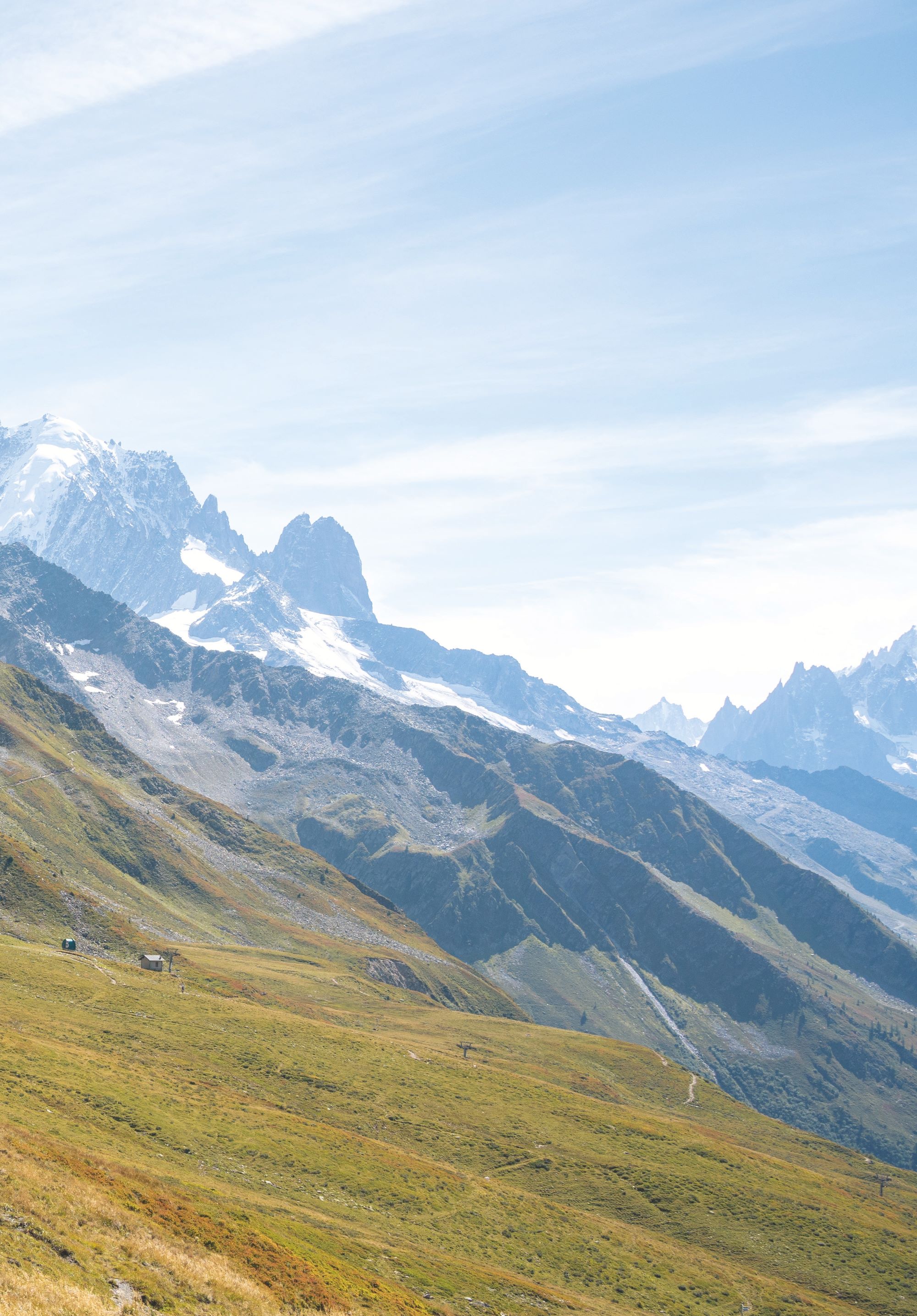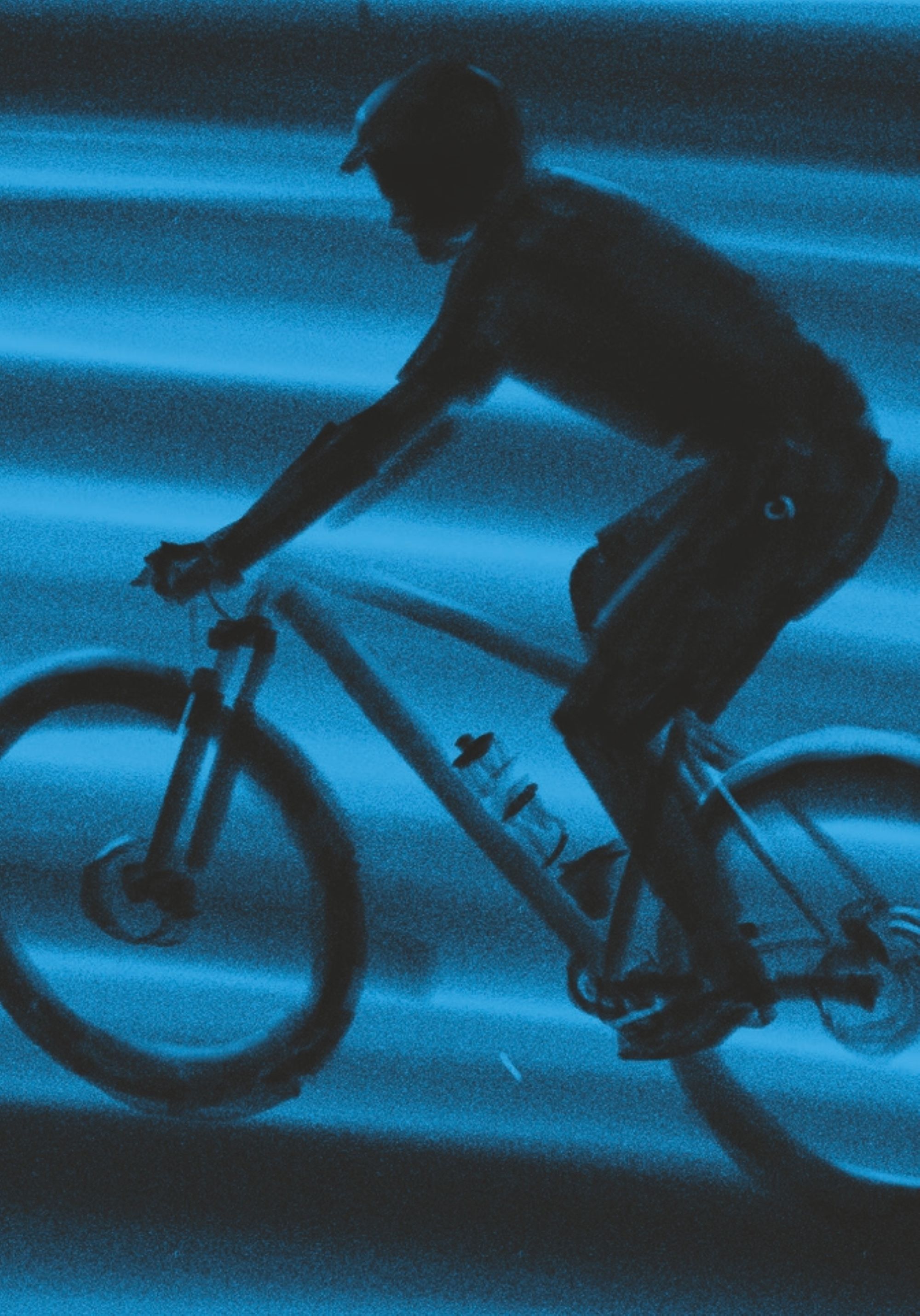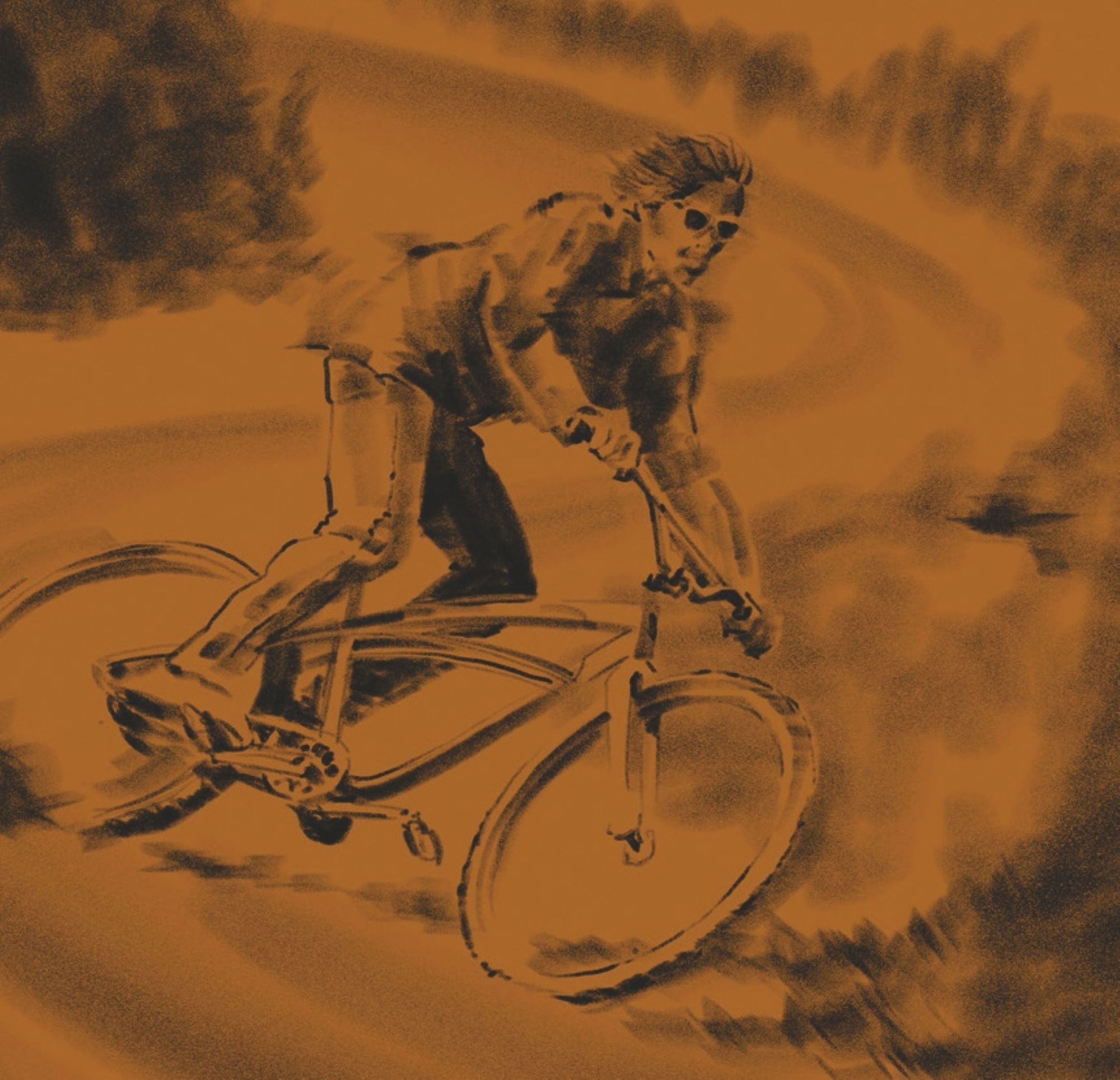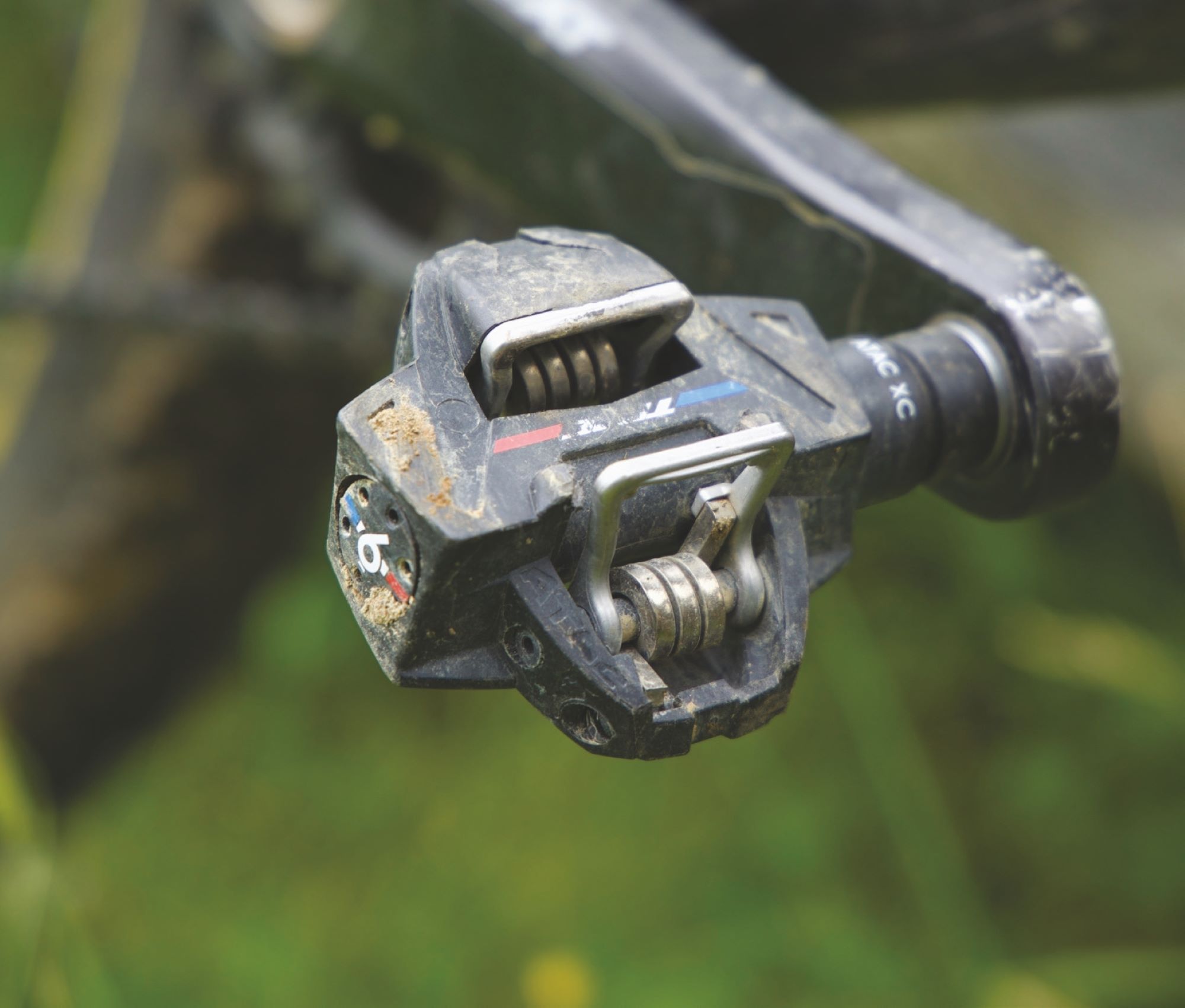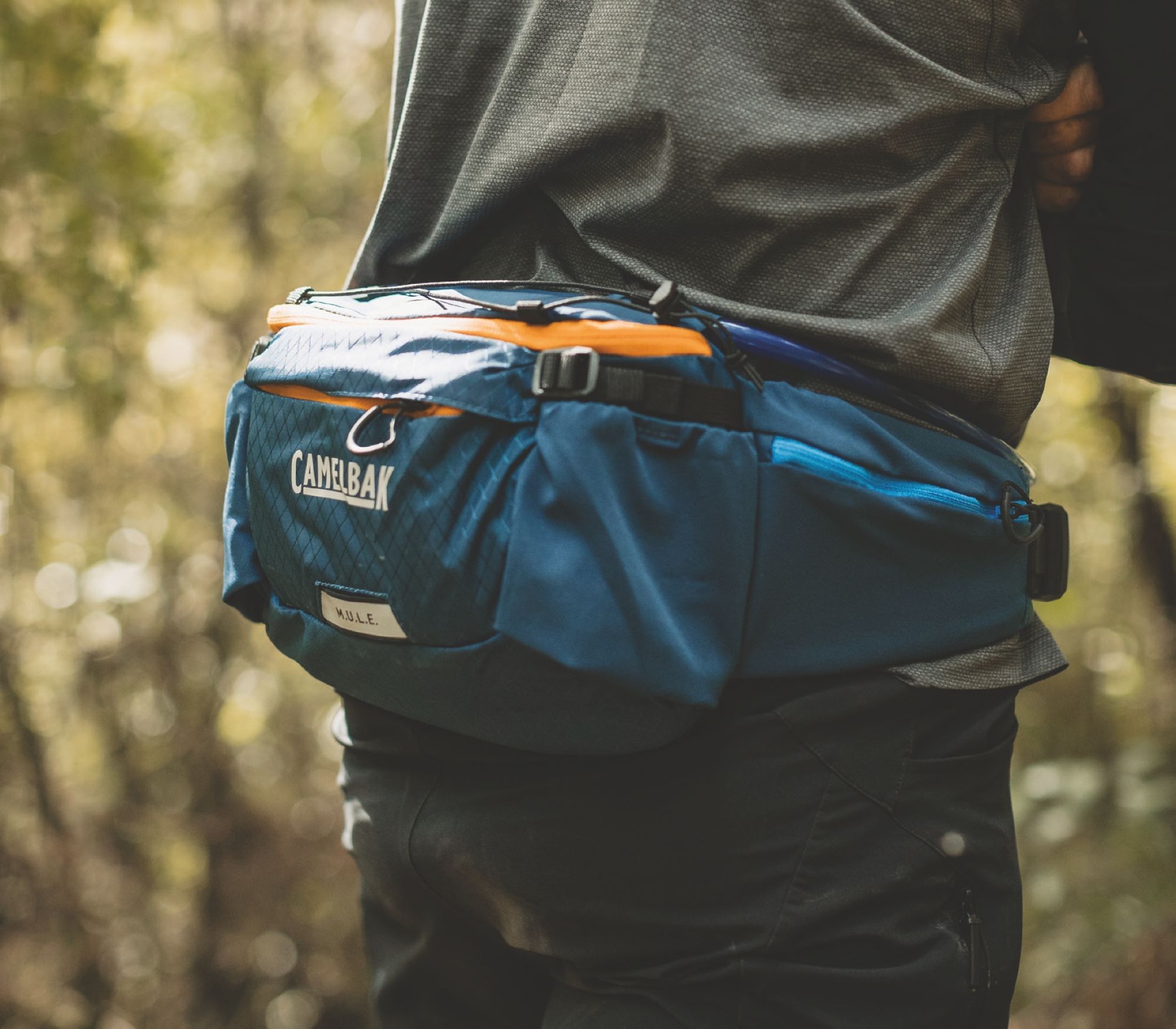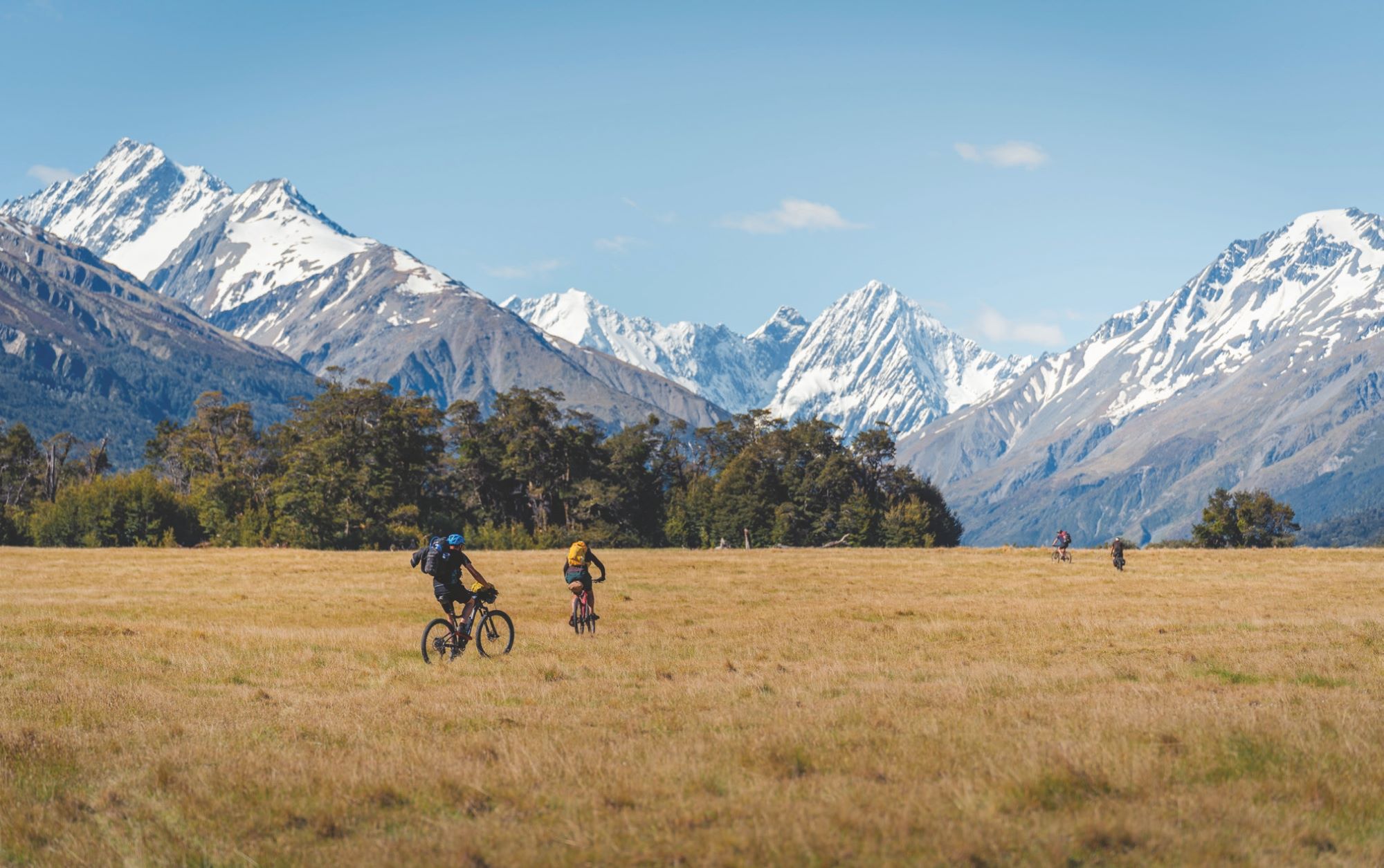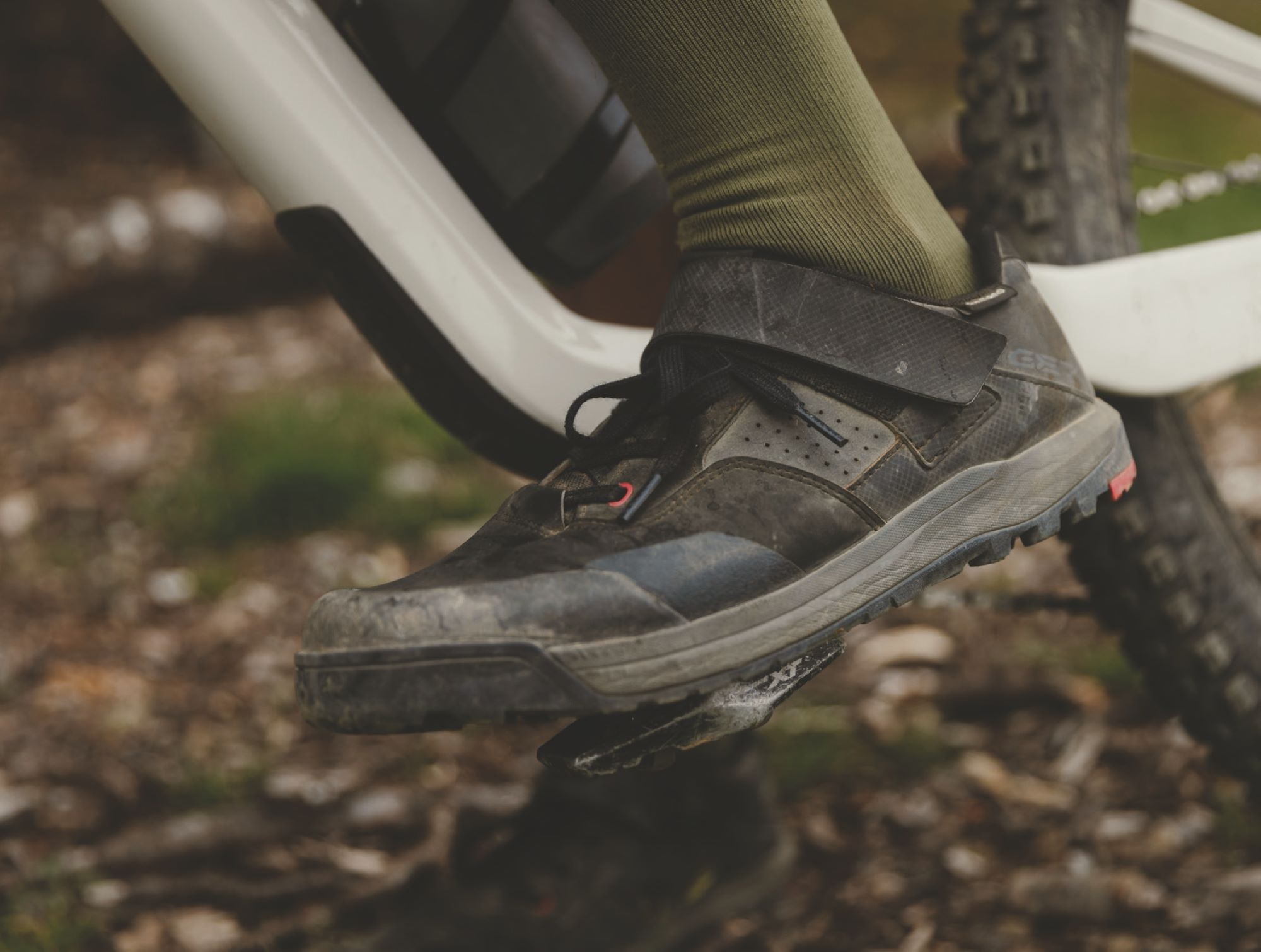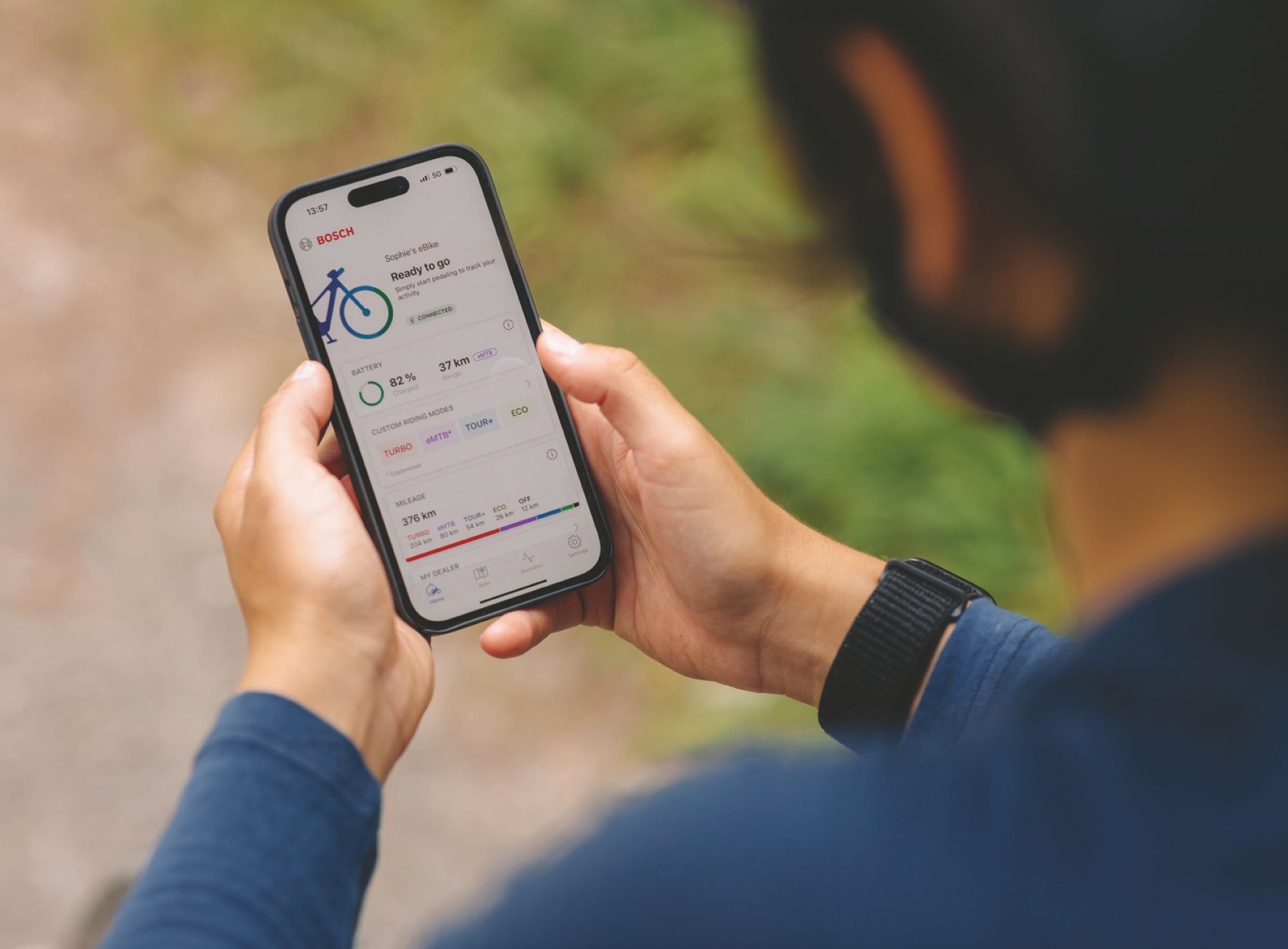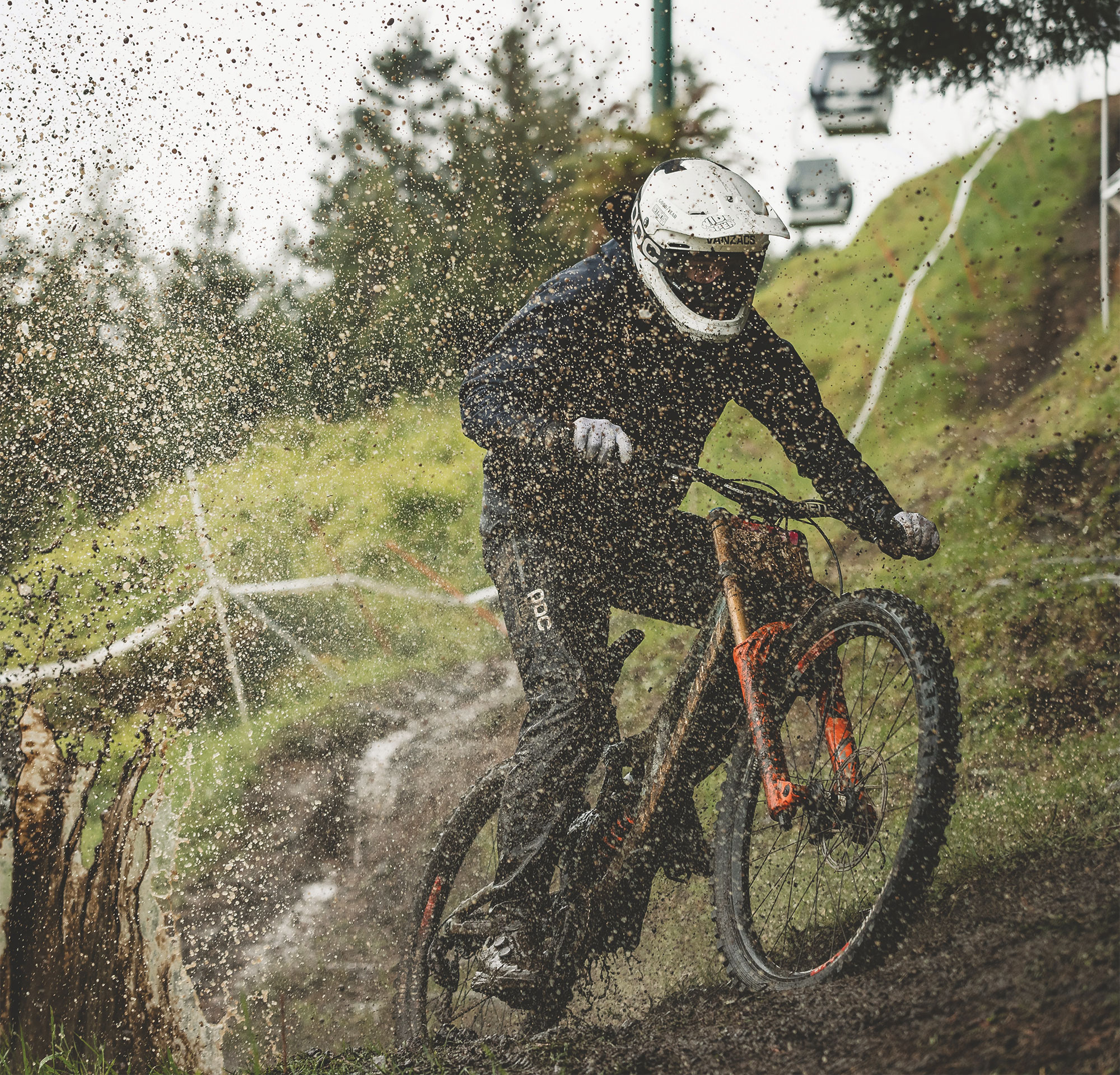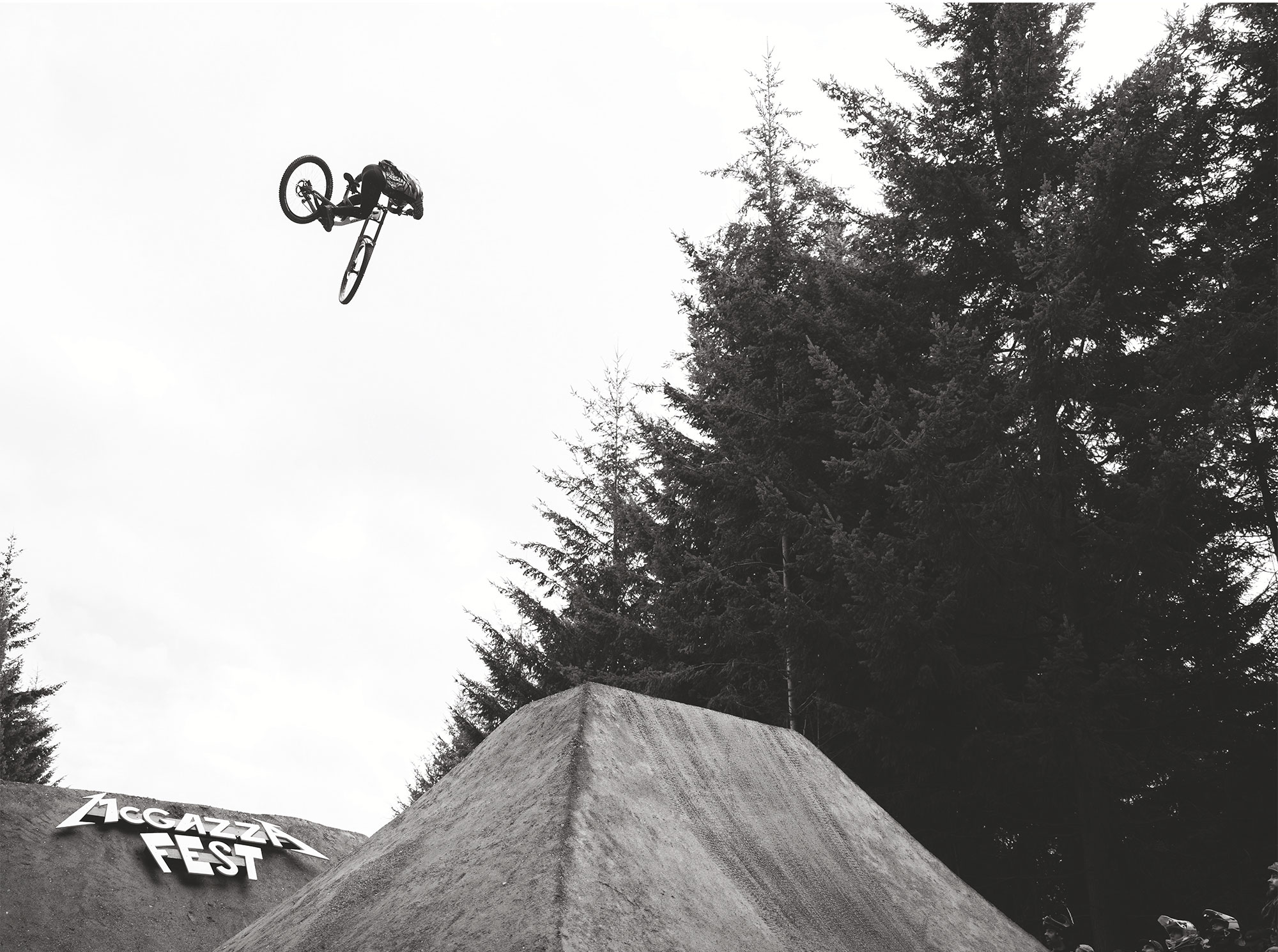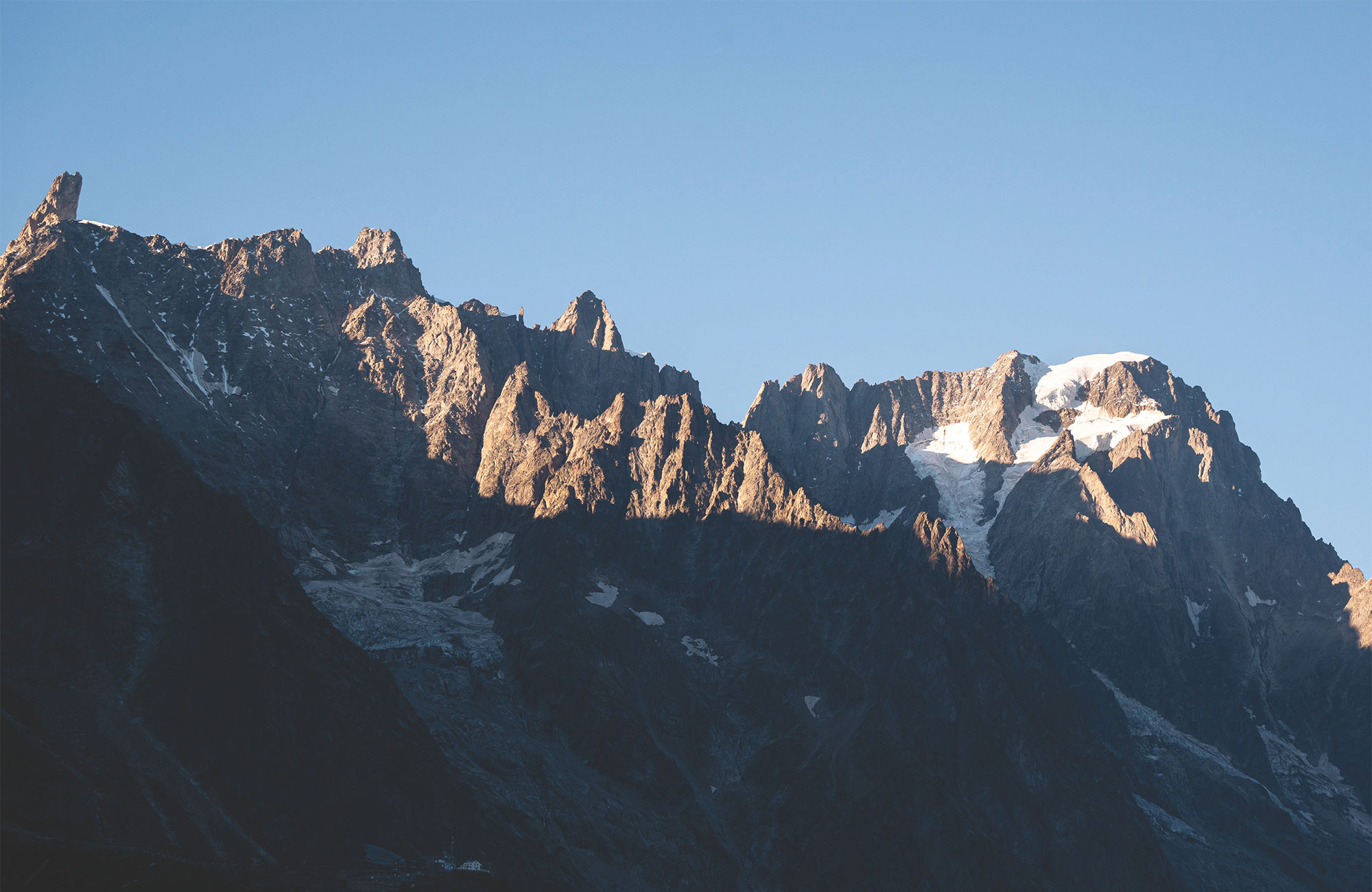Opinion: Square peg, round hole
Words Lester Perry
Illustration Gary Sullivan
Consider this: you’re a new rider rolling up to a trailhead, you’ve borrowed a bike from a mate who didn’t need it today, and it’s your first time riding by yourself. Unloading the bike, you’re excited; it’s a size too big but you wouldn’t know otherwise. Your mate who you’d normally ride with isn’t with you today, so you’re more focused on what’s happening around you. Dressed in the clothes you wear daily, you mount your steed. Heading toward the trail from the car, you’re looking at what other people are riding, what they’re wearing, and the lingo they’re using. You see things you don’t usually notice when you’re riding with your mate. “Cripes, those bikes are worth more than my mate’s bike, his car – and mine – combined!” “Those guys in all that fancy riding kit look pretty serious, must be what you need to wear for this riding stuff…”\
If you’re reading this, you’re probably not the person above. It’s likely, like me, you’re one of those other people our person rolled past on their way to the trailhead. It gets me thinking – are we losing people from our sport because they feel out of place or because it’s not an accessible or inclusive sport? I sure think so.
The person mentioned above is probably going to feel out of place – in fact, maybe they’ll have the same feeling I get after walking into a high-fashion store. “There’s nothing here for me; I don’t identify with anything or see anyone like me.” Maybe we’ll see these people at the trails a few times, but maybe they’ll switch off, and riding will become a “now and then” hobby as opposed to an exciting and enriching part of their lives – like it is for us.
Mountain biking has become an upper-middle- class sport at best. In particular regions, I’d almost go as far as to say that, from the outside, it looks like an elitist sport. That’s a huge generalisation and there are people working hard to break this mould but, for now, that’s how I think it looks from the outside.
We need a shift in thinking. Too often these days, trailside chat is about the latest wizz-bang gadget, recent component or gear purchase – or the cost of said part -, rather than about what a good time we’re having out on the trails. It’s worth pondering; are the upgrades and purchases we make really necessary upgrades, or just vanity purchases?
There’s an undercurrent that the bike we’re on must be as close to the top of the range as possible - and heaven forbid we ride it in its stock form straight from the shop floor!
Unfortunately, it seems mountain biking has become a fashion sport, with purchasing decisions nowadays driven by fashion and the need to have the latest thing, rather than an actual necessity. There’s an undercurrent that the bike we’re on must be as close to the top of the range as possible – and heaven forbid we ride it in its stock form straight from the shop floor! Honestly, how many people are out-riding a mid-level fork and need the top model? Those OEM tyres?They’re probably not that bad, so why not wear them out before you change them? You might even be surprised at how good they really are, regardless of what you’re told.
Sure, if something’s worn out or broken, it needs replacing – but I reckon we need to normalise buying secondhand, or at least considering it, for no other reason than minimising our impact on the planet and, in a small way, we may avoid excluding people. If a bike has been properly looked after, it should last years – and to be fair, the minuscule upgrades we see from season to season are almost unnoticeable. They’re 1% changes barely worth dropping bank on. Will you really feel the difference or is it just that shiny decal you want to show your mates on Instagram?
When it comes to buying a brand-new bike, the same logic applies. I’ve seen riders (myself included in the past) ticking up high-end rigs on high-interest schemes, all to keep up with the Joneses, leaving them financially overreaching and ultimately over-capitalising on their bike. Let’s normalise buying a cheaper bike – it doesn’t necessarily need to be of lesser quality, but perhaps not a premium top-level rig. I’ve been surprised by the performance of some mid- level groupsets and suspension. Are those shiny decals and a 300-gram saving in weight really worth a few extra grand? Doubt it. I’d encourage buying a value-conscious bike that’s more realistically suited to the level it will be used. Don’t skimp out too much, but deal with that extra weight and spend the money saved on a skills clinic and a riding trip. Both of these will boost your riding level and give longer-lasting enjoyment than that 300-gram saving ever will.
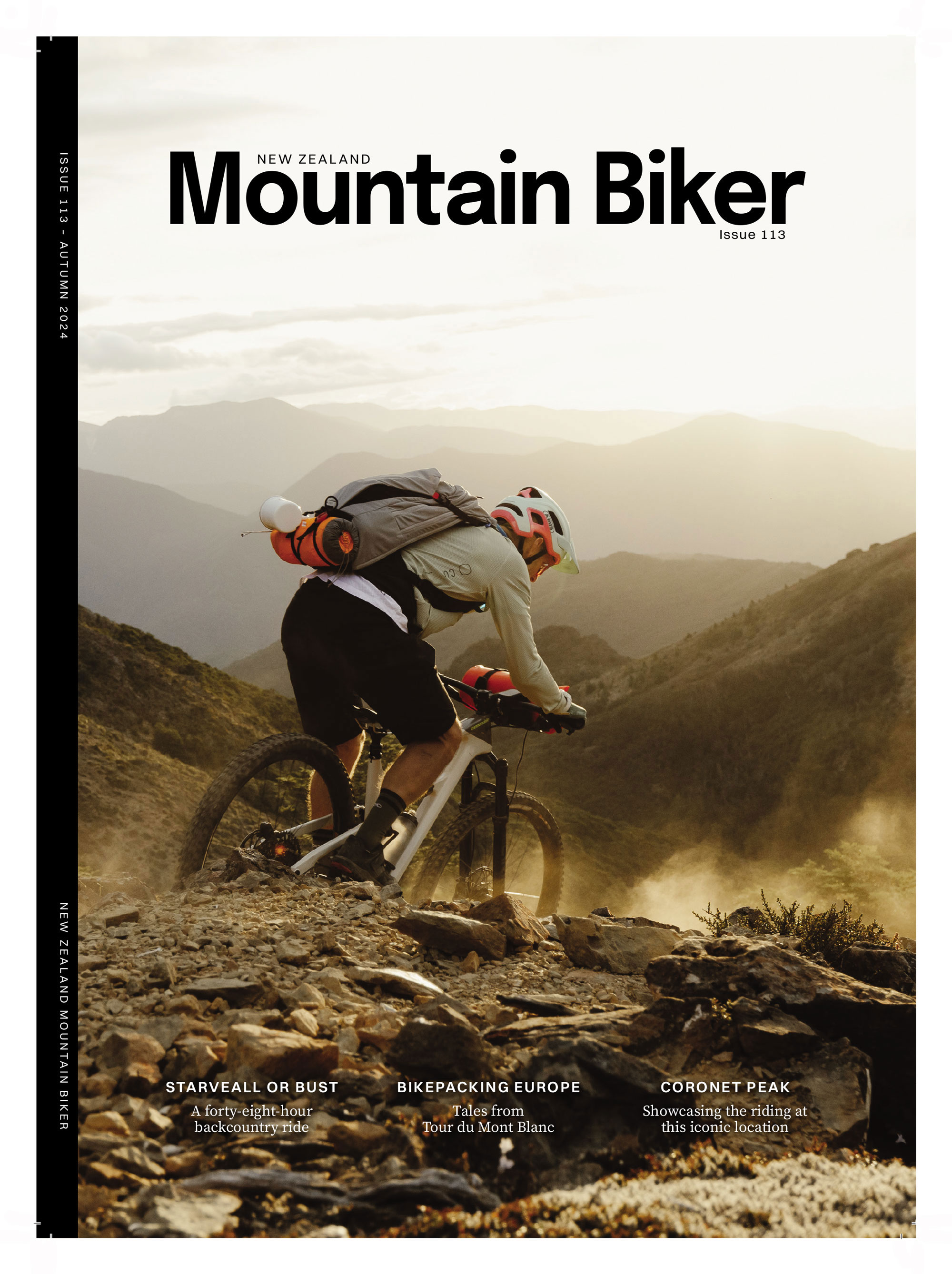
Opinion: Bikes are good, period
Words & Illustration Gary Sullivan
This column was going to be about a bike ride and yet another weird character trait I discovered while doing it.
Then, I read Lester’s excellent opinion piece, which can be found elsewhere in this issue. I get to preview things like that if I am asked to provide an illustration to go with it, and I absorbed it in full agreement. I like to say my favourite bike is the one I am riding when I should be working, so just about anything with two wheels will qualify on any given day. Doesn’t need to be top of the line, up-to-date, or even manufactured this century. Bikes are good, period.
That thinking got me started on the state of things in the ‘industry’ right now.
One of the retail behemoths that trade in the New Zealand bike segment has recently changed hands for a dollar. A well-known brand, a bunch of stores, a heap of staff, and probably a significant pile of debt – all this for a dollar, presumably ex-GST.
People have often remarked, in recent years, that this outfit and the other more specialised retail behemoth were in a race to the bottom, and I guess this means there is now a winner.
Financial commentators place some of the blame for the failure of this outfit to make a profit on the post-COVID struggles of the bike market. Not sure about that, but the bike market is definitely in a weird state.
Suppliers super-flush with inventory are struggling to sell stuff. There are solid reasons for that situation.
Talk to just about anybody in the bike caper – they will tell you times are tough. The troubles started with COVID, and not with a downturn. It was a boom. Most activities that were fun were off the table, but riding a bike was still allowed. Travel was a no-go, and interest rates were still almost non-existent, so a lot of people threw their excess dough and energy into bikes.
I like to say my favourite bike is the one I am riding when I should be working, so just about anything with two wheels will qualify on any given day. Doesn’t need to be top of the line, up-to-date, or even manufactured this century.
This happened globally… in the developed world anyway. Nearly every supplier ran out of more or less everything. Lead times for the products people wanted were years long in some cases, and retailers and their customers were very cranky with distributors, who were similarly cranky with their suppliers.
As the retail market clamoured for more, manufacturers cranked up their ability to deliver stuff.
It is perhaps surprising that the general expectation seemed to be that the golden weather would go on forever.
By the time that increased productivity reached the shop floor, most people who were going to had already bought their bike stuff, COVID was now a boring sidebar to life, and the heat was disappearing from the market.
Then a bunch of discretionary cash was hoovered out of the picture by increasing costs of living, and interest rates.
Around the world, big companies have gone bust, teams have folded, sponsorships are drying up. Top riders in some branches of the sport have found themselves out of a gig.
I think the current problem in the bike game is similar to the challenges of capitalism in general: endless growth is impossible to maintain, and it was never going to continue like it did for that brief period during COVID.
There is a lot of product available, new stuff will continue to arrive, and right now things are tight.
But hey! A good bike shop is a wonderful thing. A real bike shop will be kept afloat year-round by the constant need that riders have for parts and service. Of course, it will sell bikes, as many as possible. A good shop will try to ensure that the bike sold matches the customer’s needs.
Meanwhile, out in the woods, things have never been better. There is nothing wrong with the actual sport of riding a bike. Doesn’t matter if the rider is on the latest thing or on a sled from last century - hooning down a trail is as good as it ever was, and many people are out there doing it.
More valuable to their customers will be the advice and insights they pass on. By the time a punter has been absorbed into the sport to the point where escaping is unlikely, they will have figured out which bike shop suits them and will be in there on a regular basis, dropping cash on keeping a bike (or fleet) functional.
Meanwhile, out in the woods, things have never been better. There is nothing wrong with the actual sport of riding a bike. Doesn’t matter if the rider is on the latest thing or on a sled from last century – hooning down a trail is as good as it ever was, and many people are out there doing it. Gravel is growing, bikepacking is growing, eBikes are everywhere.
Which brings me back to my initial sentence – the bike ride.
I got a stellar Saturday a few weeks ago and, for reasons I now forget, I had nothing else that urgently needed doing except bike riding.
As usual when riding familiar territory, I started creating a route in my head on the way to the trails. By the time I got to my start point I had one sketched out.
It was ambitious.
Up As You Do, down Ten of Clubs, on to Corridor, then Turkish, Rock Drop and Rosebank, coffee and muffin, up Soakhole, down K2, up Direct, down Tutaeata, up Apumoana, down Johnsons, up Lobotomy to the top, down Tihi-O-Tawa, back to the top, through Tuhoto Ariki, up Moerangi, down Te Ahi Manawa, up Lookout, down No Brains, along Taura, up Tokorangi, down Fluffies.
Incomprehensible if you have never visited Rotorua but, trust me, it is a big and lavish helping of trails.
I expected it to take a while.
It did. It was great, I met people here and there (see above re. the state of the sport), only got passed twice (two young fellas at the same time, so only counts as once). I fell off twice.
Here is the weird character trait: by the last climb I was out of gas. I had to sit down on the side of the trail and gaze into space for a while. Some complete beginners even asked me if I was alright. I was, I was just rooted.
But I had to finish my route. Once created, it needed completion. Why, I can’t explain. It just did.

Time ATAC XC6 Pedals
Words & Image Lester Perry
RRP $235
Distributor Worralls
Since 1987, Time pedals have been a regular feature in the road peloton, often found under the shoes of many a Tour de France contender, regardless of whether they were sponsored by them or not.
In 1991, Time added the ATAC MTB pedal to their range, satisfying cross-country riders’ need for float in the cleat while retaining efficient power transfer. Time pedals have taken multiple riders to World and Olympic glory in cross-country races, but seem to have always flown somewhat under the radar in wider MTB circles – although they’ve maintained an underground, hardcore following of those who like the feel and self-cleaning of the system.
In February 2021, SRAM acquired Time Pedals, bringing it into its extensive family of brands, boosting its profile and putting it back on people’s radars.
The few times I’ve stepped away from my tried-and-true Shimano pedals, I’ve jumped right back on them in just a few rides. I’m either too impatient and didn’t give myself time to adapt to the feel of something new, or the product wasn’t up to par. Until the box turned up with the Time XC6 pedals inside. I’d never even considered trying Time pedals, such was my fear of changing from the familiar.
Featuring a hollow steel axle for lightness and durability, a composite body, and tension adjustment, the features of the XC6 are familiar. The ATAC retention system offers easy engagement, and its open design helps clear debris each time you step in, the cleat forcing debris out through the retention device.
There are two heel release angles available, depending on which shoe you mounted which cleat on. One configuration gives a 13-degree release angle and swapping the cleats left for right gives a 17-degree release angle. Whichever way you choose to set up the cleats, there’s a 5-degree angular float. Uniquely, and fitting with Time’s aim to offer more ergonomic pedals than their competition, there’s also a +/-2.5mm of lateral float helping a rider’s legs move in more natural planes.
Clipping in is more or less the same as what I’m used to, a positive feel, and an audible click as the cleat snaps into place. Compared to what I’m used to, there’s a more progressive feel as you unclip, a slow build of tension before it pops free, rather than the firmer ‘snap’, almost instant, feeling I’m used to.
With cleats set at 17 degrees, I found them odd – far more ‘twist’ of the foot was needed than I liked, leaving me unsure I’d get along with the system, as I couldn’t get my foot out as fast as I needed for an emergency foot dab! I imagine some riders would like the feel of being able to move their feet around this much without fear of them unclipping, but it’s certainly more than I’d like.
After my experience at 17 degrees, I not so enthusiastically swapped the cleats around to the 13-degree release set up. What a game-changer that was; a more familiar feeling, although still different from my norm, and a completely different experience from the 17-degree. Only after the swap was I really beginning to click with these pedals! (See what I did there?) There are only three clicks of tension adjustment on offer and I really thought Time had missed a beat here, but after some experimenting, I tensioned them up to max and left them. The retention is so solid that I haven’t felt I needed them any tighter.
Using the XC6 pedals exclusively on my Shimano XC-901 cross-country shoes, they feel nice and solid; there’s no fouling with the sole or anything unexpected while clipping in or out. They feel noticeably more locked-in than other systems I’ve used and feel extremely positive under power. There’s almost no torsional movement or rocking of the shoe once clipped in, and no ‘up and down’ play between pedal and cleat either, just a very secure feeling all around.
After spending a few months on the pedals I’ve been impressed, they’ve done their job without skipping a beat and I’m now surprised Time pedals don’t feature more on people’s bikes, particularly in one of the more popular ‘trail’ styles that Time offer.
Clipping in is more or less the same as what I’m used to, a positive feel, and an audible click as the cleat snaps into place. Compared to what I’m used to, there’s a more progressive feel as you unclip, a slow build of tension before it pops free, rather than the firmer ‘snap’, almost instant, feeling I’m used to.
While out of the saddle pedalling up steep inclines, I’ve occasionally felt my shoe moving forward and backwards a fraction. I’m putting this down to the bars of the retention device moving a smidgen, they’re basically two springs so I figure they’ll move slightly in some scenarios. Not a biggie and by no means a deal breaker, but it was a bit unnerving at first although it’s only in extreme uphill scenarios when it is noticeable.
Thus far the only wear on the pedal body is cosmetic, and the cleats have lasted well, although being brass I wonder if they’ll wear quicker over winter in some slop. My only real concern is noticeable groves wearing in front of, and behind the cleat on my shoes, the mechanism has worn into the carbon sole slightly. This isn’t a worry yet, although I’ll be interested to see it in another six months. I do wonder if they “bed in” and then stop wearing any further. I know other pedal brands offer “shoe shields” but Time doesn’t appear to; these would remedy this I’m sure.
After spending a few months on the pedals I’ve been impressed, they’ve done their job without skipping a beat and I’m now surprised Time pedals don’t feature more on people’s bikes, particularly in one of the more popular ‘trail’ styles that Time offer.
If you’ve had knee or hip issues in the past, want pedals that clear muck exceptionally, or simply want something a little different from your mates, then don’t look past the Time pedals!

CamelBak M.U.L.E 5 Waist Pack
Words Lester Perry
Image Cameron Mackenzie
RRP $179
Distributor Southern Approach
Let’s face it: most people avoid riding with a backpack at all costs, particularly on hot summer days. Out on the trails, we see all sorts of things strapped to bikes, but if you’re hoping to go further afield and into the outback then you need more than that tube, a CO2 canister and a tyre lever strapped to your top tube, let alone the need for extra hydration.
The CamelBak M.U.L.E is a worthy attempt to solve the problem of not wanting to wear a pack, whilst carrying almost as much gear as a small pack, along with some extra hydration. The hip-pack weighs in at 320 grams and offers a 3.5-litre capacity. It’s sewn from a hardwearing, lightweight 200D Nylon Ripstop material. An Air Support back panel helps with airflow between the pack and the body, using an open mesh and foam combo to help air move between the two.
The M.U.L.E has lots of storage options; the main compartment has a pocket for the bladder and some internal pockets to help keep small items in place and right where you put them; and there’s also a smaller outer pocket. On either side of the main compartment are bottle holders, designed for a regular-sized CamelBak Podium bottle but ideal for whatever you want to stuff in them. The waist strap helps support the load on the hips and adds stretchy pockets with envelope closures on either side of the main compartments, ideal for small items you want easy access to without needing to rotate the pack forward. Compression straps can be cinched up to hold the contents in place and help keep the weight close to the body. Along the bottom of the pack are some elastic loops, offering additional external storage, ideal for a jacket, large salami, or half-eaten baguette.
The M.U.L.E comes supplied with a Crux 1.5L hydration bladder, offering effortless access for your sipping pleasure thanks to its nifty QuickLink magnetic holster and high-flow bit valve. If you wanted, you could forego the bladder and add bottles to the side pockets for a more versatile and adaptable setup.
Having a waist pack on some of our hottest days, rather than a full pack, has been great - it’s so much cooler to wear.
As you can see, there’s quite a lot going on with the M.U.L.E. I’ve found it a versatile piece of kit, using it on some lengthy rides, sans bladder, mainly as a place to stow some tools, food, and a jacket, while keeping bottles on my bike. I’ve generally left it loaded up after each ride so I can just clip it on when I’m heading out for a dawn raid, knowing I’ve got everything I need for every eventuality, within arm’s reach. Having a waist pack on some of our hottest days, rather than a full pack, has been great – it’s so much cooler to wear. Without a full bladder in there, the capacity is quite large and I can’t imagine anyone would need anything bigger than this to carry a day-trip worth of gear.
On adventures where I’ve added the 1.5-litre bladder into the mix, I’ve found the pack quite heavy, probably a good couple of kilos hanging off my hips. When I was breathing heavily while seated (think a steep hour-long climb) the waist belt got in the way of breathing freely – not ideal. Trying to remedy this, I’ve taken to fitting the strap as low on my hips as possible; this helps to a point, but doesn’t solve the problem. I have found it’s better suited to riding a more relaxed, upright position (i.e. on an Enduro bike) and when I’m not puffing hard it’s certainly not as noticeable.
Does it work well? Yes. Is it comfortable and unobtrusive to use? Sort of. It’s comfortable to wear and I’ve appreciated being able to have a bunch of kit on hand, but when the bladder is full, all that weight hanging off my hips and interfering with breathing kills the advantages of using it for me. I’ll keep using it to carry gear and food when required, but only use a full bladder when there’s really no other option.

Small Victories: Celebrating a 40th following a spinal cord injury
Words & Images Chris Owen
Turning forty is a milestone that deserves a decent celebration. A couple of years ago, I was on the verge of hitting the big Four-O, but it was hard to believe… How had I been a ‘grown up’ for that long? When it came to the good times I had on bikes, it didn’t seem I had progressed far from adolescence really!
I’d spent a good part of my adult life riding bikes, and the things I loved about it hadn’t changed since I was a kid; doing skids, hucking off stuff, and trying (failing?) to go faster than my mates – all put a big grin on my face. And, of course, that surge of adrenaline and relief you experience when you ride out the other side of something terrifying.
On the 10th of September 2022, I suddenly felt my age pretty significantly, following a crash that was one for the books. Bike parks often promote the ‘Pre-Ride / Re-Ride / Freeride’ approach to hitting new or re-built trails, and a popular jump line had just re-opened after having some work done on it. I was keen to sample the new features, but I was also in a hurry to get home and keep promises to my wife – no time for pre-rides or re-rides. Bombing down the trail, I overshot a jump at full pace and, looking ahead with horror, saw what was about to happen.
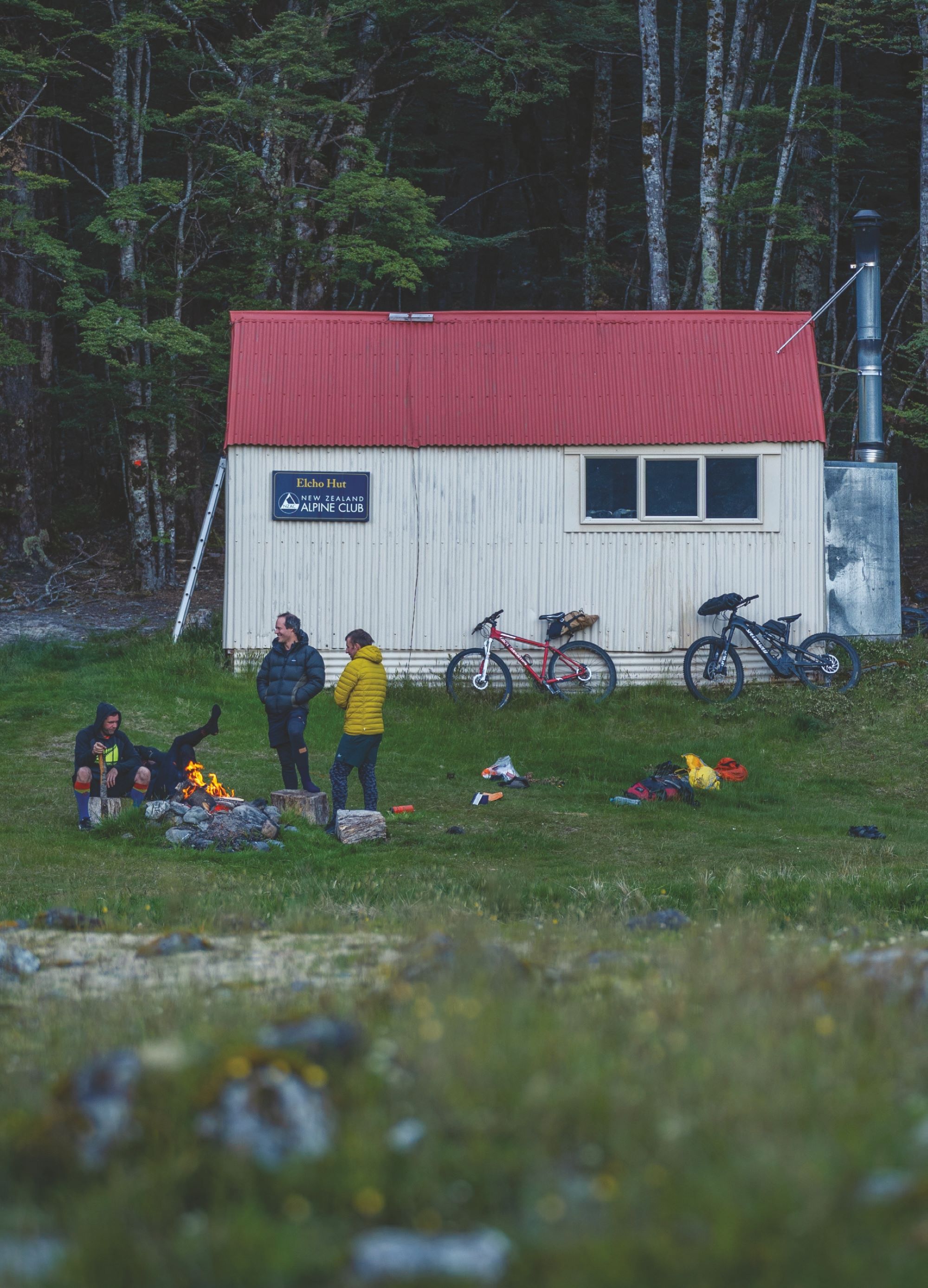
The second my wheels touched down, way past the landing, my bike ploughed into the back of a freshly built berm. The result (after getting flipped upside down and clipping a tree), was twelve broken ribs, a split diaphragm, three broken vertebrae and a spinal cord injury. In a split second, some bad decision making had changed my life.
The weeks and months following the crash pushed my body and my mind to their limits. I spent four months as a patient in Burwood Hospital’s spinal unit, full of uncertainty about what the rest of my life was going to look like. Burwood is an excellent facility, but even the most qualified doctors were reluctant to tell me whether or not I’d walk again. When your lower body suddenly goes offline and you don’t know whether you will get it back, it’s terrifying; there is so much to process. At Burwood, I felt like I’d been plucked out of my ‘normal life’ into a whole new world; one that involved wheelchairs, catheters, an endless array of medication, and a total invasion of privacy. The first few evenings there were the hardest; after visitors left and the ward was quiet. In those moments, negative thoughts, anxiety and fear tried their best to consume me.
Reflecting on my time in Burwood, I consider myself one of the lucky ones, for so many reasons. Firstly, I didn’t hit my head. Secondly, I did have a shot at getting back on my feet, due to the way I’d damaged my spine – it wasn’t certain, but if I put the work in, I may just walk again. More importantly, though, my accident taught me just how much the people in my life cared about me. I was deeply moved by the ongoing flow of love and support I received. Collectively, everyone strongly believed that I would crush my recovery, and this lit a fire under me – I had so many incredible people in my corner, I was seriously motivated to work as hard as possible; not just for myself, but for them as well.
Amongst the patients at Burwood were some inspirational people who became close friends. They helped me realise that the hard work started in my head. I learnt early on that I couldn’t let negative thoughts see the light of day. Easier said than done, but crucial to getting out of bed every morning, into a wheelchair, and down the hallway to physio. I did my best to focus on the present – I tried not to pay attention to the sheer scale of work that lay ahead of me. It became obvious pretty quickly that this recovery was going to be a slow grind, so I chose (and still choose) to celebrate the small victories. It was all about the small victories. Focus on the battles, don’t think about the war. Block out thoughts about the future, just visualise walking out the front door on discharge day. Most importantly, believe in myself. There were plenty of rough days when this mindset went to the dogs. But, for the most part, I tried to see life through this lens, and so I went to work.
Fast forward to November 2023: it’s been a heavy year but I’m on my feet, and even better – I’m back on a bike! I discharged from Burwood by walking out the front door just as I had imagined. But, despite that milestone, I’m not out of the woods – a number of leg muscles still lack proper function, and it doesn’t take much to absolutely exhaust me. It’s still uncertain how much strength I’ll get back but, after everything I’ve been through, I’m insanely grateful to get this far. It’s been months of life on repeat, working with a cast of amazing people: physio, acupuncture, hydrotherapy, gym, Pilates, work, family time, rest. Rinse and repeat weekly. The progress is glacially slow, but there is always noticeable improvement every week or two, even if it’s minimal. That’s all the motivation I need to keep going at it. Small victories.
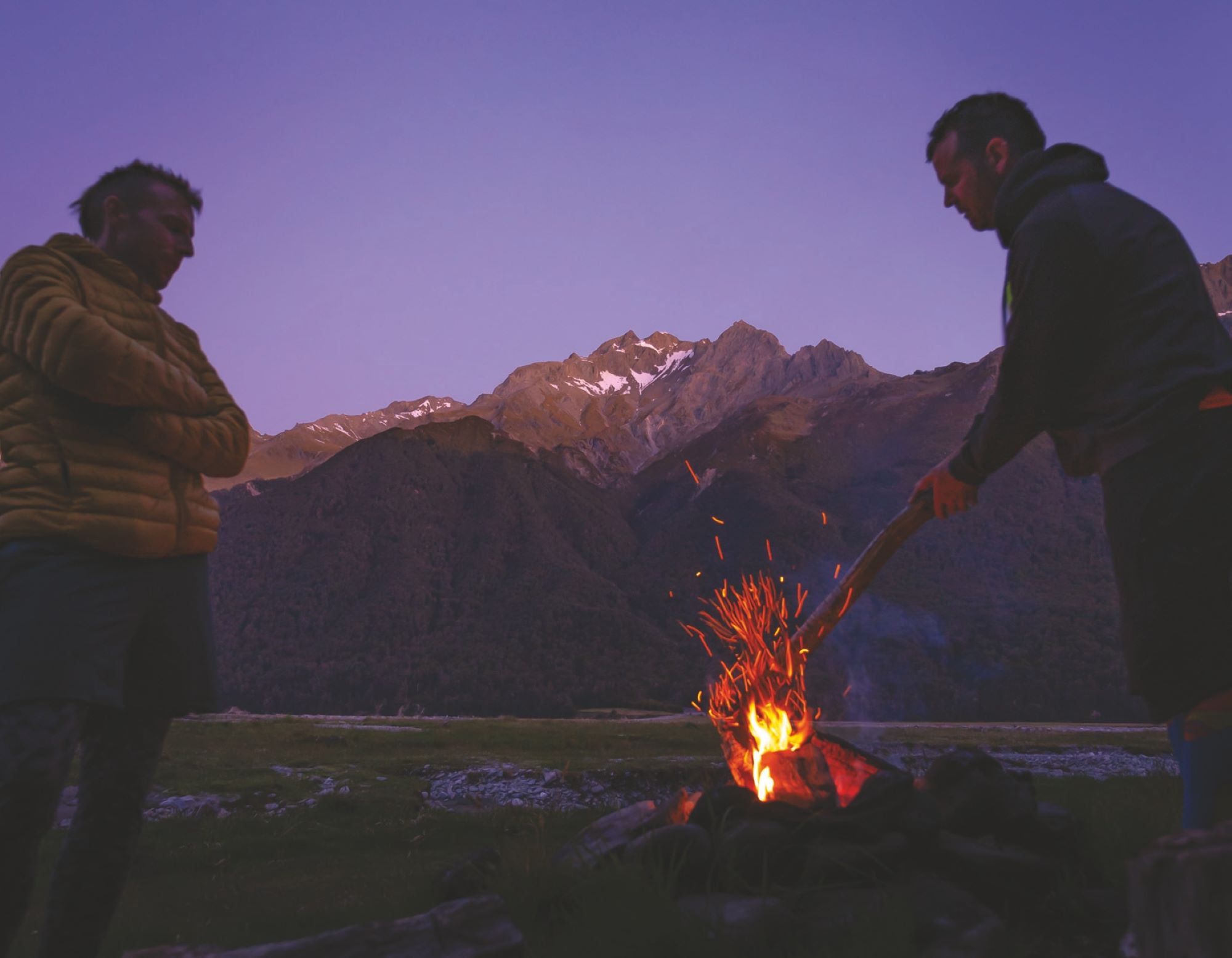
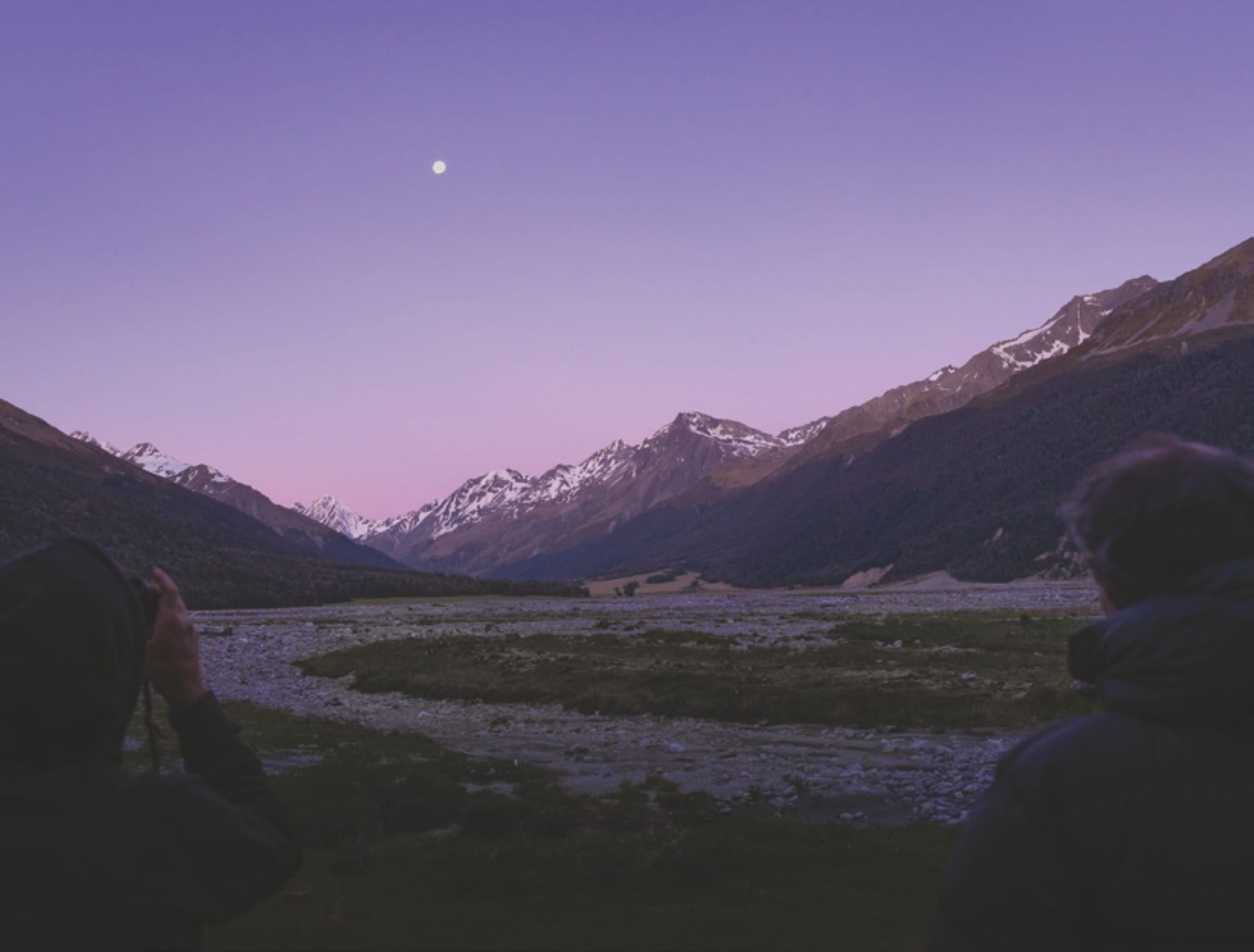
Focus on the battles, don’t think about the war. Block out thoughts about the future, just visualise walking out the front door on discharge day. Most importantly, believe in myself. There were plenty of rough days when this mindset went to the dogs. But, for the most part, I tried to see life through this lens, and so I went to work.
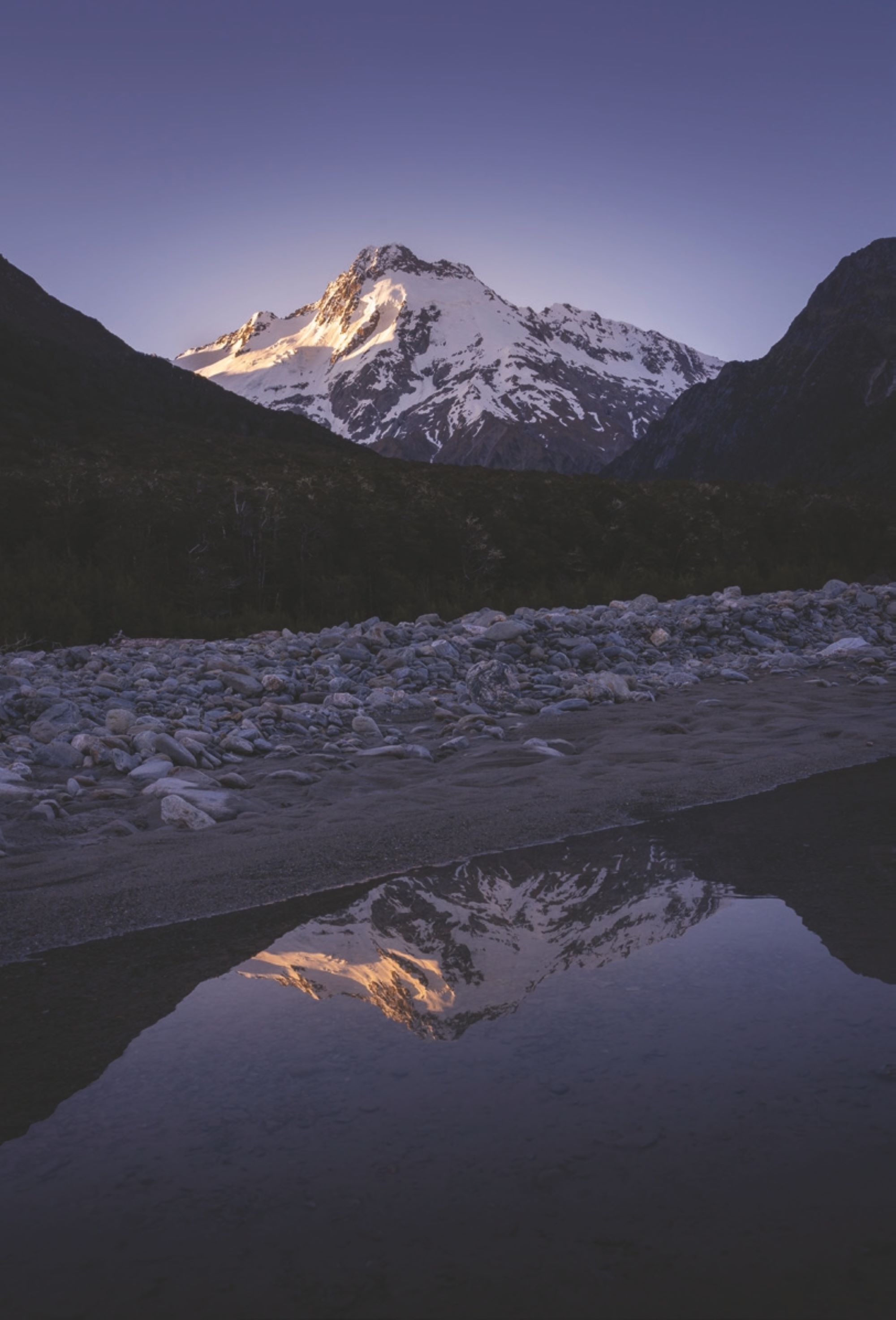
Seemingly out of nowhere, my 40th is just around the corner and, aside from special time with my beautiful wife and cheeky children, there’s only one way I want to celebrate it – on bikes in the mountains (eBike for me), with my mates and my brother. Doing something that, for a while, looked like it may never be possible for me again. Group chat created, keen participants locked in, route and hut suggestions getting thrown around. Lots of ideas are kicked to the curb. Understandably, everyone is concerned about what I’ll be able to manage. I convince the boys an overnighter in the Hopkins Valley is perfect, based on my very faded recollection of a climbing trip there 11 years ago. I sell it as a cruisy pedal up a flat valley, mostly 4WD track with a few shallow river crossings. Sold. Packing starts in earnest, including all the usual bikepacking and camera gear as well as crutches, a bag of meds, and bathroom consumables (if you know, you know… if you don’t, ignorance is bliss). It’s the night before, forecast looks perfect, and I can’t wait. I decide to dig out the photos from that climbing trip, years before. I notice suddenly that the ‘shallow’ river crossings I recalled were actually knee-deep and swift, in more than one photo… Hmmm.
The drive down is great. I can’t believe I’m on the road with mates, heading into the hills, after the year that has just passed. Unreal. It’s a thought that sticks with me all of Friday evening and well into Saturday morning as we set off up the valley. We enjoy a chilled 4WD trail for the first few kilometres, but suddenly we are faced with our first river crossing. It’s definitely not shallow, but it’s not ridiculously deep either… it’ll go. One by one we egg each other on as the acoustic bikes get across with a few near-swims, and a lot of laughs. Then it’s my turn – I’ve done my research on the Turbo Levo’s waterproof rating, now it’s seriously about to get tested. So is my skinny right leg – if I mess this up and have to tripod quickly, there’s a fair chance the leg will just buckle, and I’ll go down with the ship. Stop thinking, start pedaling. I charge at the river and emerge on the other side upright and grinning. The boys are cheering, and so am I. More importantly, the bike is still working!
That first crossing sets the tone for the next two or three hours; weaving our way up the riverbed, carefully looking for good spots to cross, then going for it. The kilometres fall away and our bed for the night, Elcho Hut, is only a couple of km’s away. I couldn’t be more content.
Suddenly, we’ve arrived at a bottle neck. On our right, the river has become noticeably deeper and swifter. Even the strongest amongst us (including an ultra-runner and a 6-foot sheep shearer) reckon it’s dicey, let alone for a bloke with semi- functional legs! We have no choice but to explore options on our left, where the river cuts in abruptly against the bush. Looks OK on the map, just have to link up with the nearby tramping track. The boys can portage my bike along the track for about 500m while I hobble along it on crutches; all good. Except, it’s not…. the boys find the orange track markers amongst an ocean of windfallen trees and thick saplings. Pretty average terrain to push a 23kg eBike through, loaded with gear! Regardless, everyone gives it a damn good go, trying to clear a path, knowing that it looks like our only option. To me, that shows the character of guys I’m privileged to be here with. They have my back, just as they have right through this injury.
I feel a bit helpless, sitting on the riverbed while everybody else is working so hard to find a way through. We regroup, confirming my worries – the bush route’s just not going to work. At this point, I notice the fatigue starting to creep in. I know this feeling after limping home from physio more times than I care to recall, and it means my body is on the gas light. I won’t have the energy to backtrack five hours to the car. Nobody says it out loud, but it’s looking like an unplanned night in the bush could be on the cards. Everyone spreads out on one last recce. We might be in luck: Phil thinks he has found a goaty little route sandwiched between the bank and the river’s edge, about one foot wide in places, weaving under and over fallen trees. Beggars can’t be choosers, so we set out in single file – me on crutches and everyone else carrying bikes in one hand, balancing against the riverbank with the other. So far so good. After about 15 minutes of this procession, we are nearly through the worst of it. The last obstacle, a semi-submerged tree, has me doing my best to crawl/dry-hump my way over it, in an effort not to fall in the drink. We regroup on the river flat, chuffed. The Type 2 fun is over, and we’re looking forward to knocking it off with one last pedal.
Suddenly, we’ve arrived at a bottle neck. On our right, the river has become noticeably deeper and swifter. Even the strongest amongst us (including an ultra-runner and a 6-foot sheep shearer) reckon it’s dicey, let alone for a bloke with semi-functional legs! We have no choice but to explore options on our left, where the river cuts in abruptly against the bush.
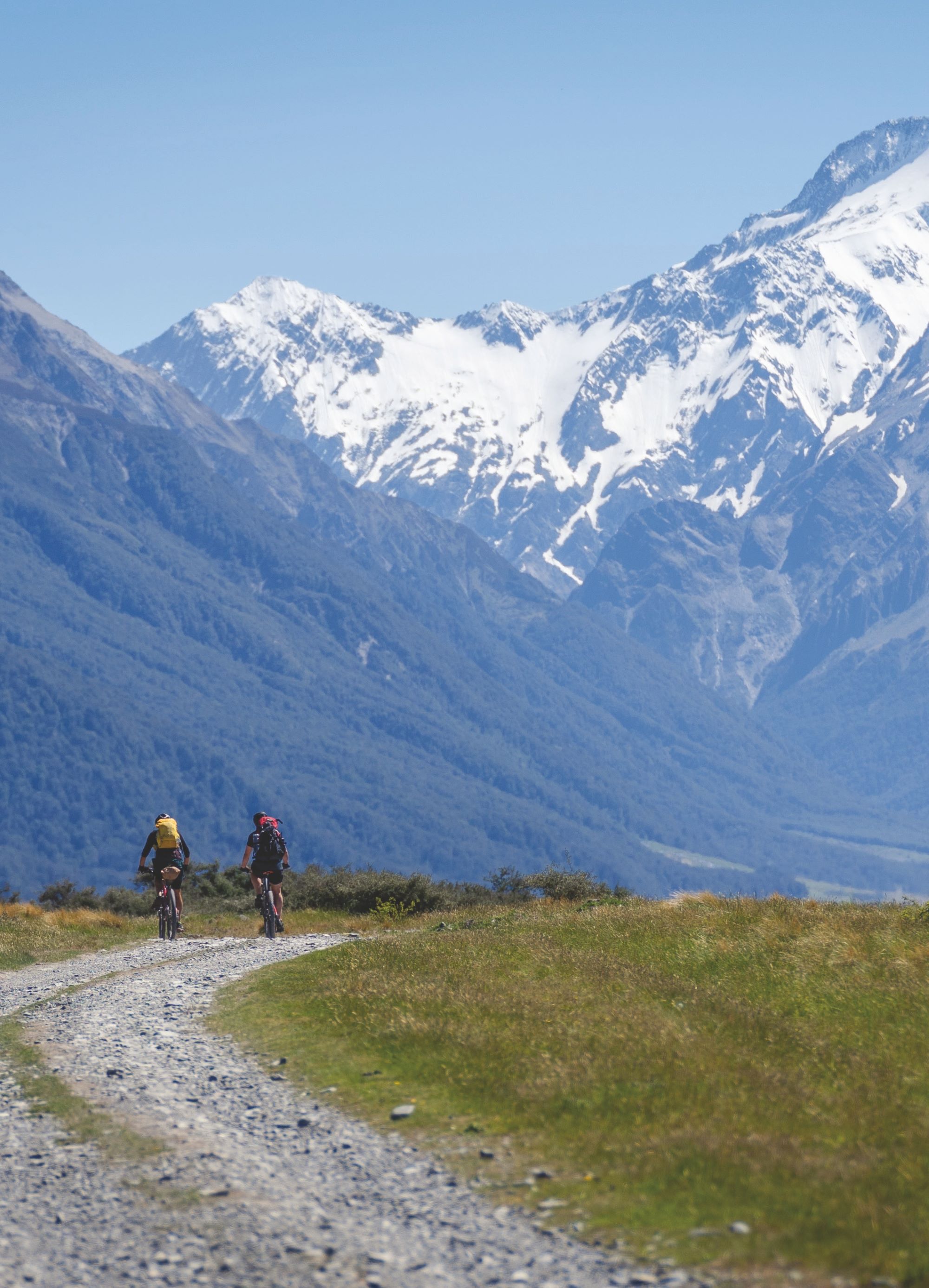
After everything I’ve been through, the privilege of being in this valley on a clear moonlit night with my bro and my mates, is not lost on me. What a way to turn 40.
The final, grassy river flat has us surrounded by a chain of snowcapped peaks, and it’s a pleasurable bit of riding after the last couple of hours. We all feel the relief at this point, roaring with laughter when Brion suddenly goes over the bars, courtesy of a camouflaged hole. Elcho Hut comes in to view, stoked. The evening is spent glassing for Tahr, taking pictures, swatting sandflies and spinning yarns. We are an eclectic mix of blokes, so the conversation topics are wide ranging to say the least.
I break away from the boys for a bit, camera in hand, and hobble around on the riverbed. As much as I want to enjoy the campfire yarns, I also want a quiet moment to enjoy what’s around me, and reflect on where I’ve come from. It’s been a wild year. I always thought spinal injuries happened to those at the pointy end of the sport. Truth is, we risk an injury of this magnitude every time we swing a leg over our bikes. Despite the issues I still face today, I’m immensely grateful that the injury wasn’t worse, and proud that my body has been able to repair itself to this point. I can’t ride the kind of trails I used to enjoy, and on a bad day, that fact hurts…. But this injury (and this trip) has taught me that just being out in the hills surrounded by good friends and family is what matters most. After everything I’ve been through, the privilege of being in this valley on a clear moonlit night with my bro and my mates, is not lost on me. What a way to turn 40.
“We don’t know how lucky we are mate” - Fred Dagg

Shimano GE700 Shoes
Words Lester Perry
Image Henry Jaine
RRP $249
Distributor Shimano NZ
If the shoe fits, wear it.
The GE7 is part of the latest range of redefined Shimano shoes. Much like the flat pedal- focussed GF6 we reviewed in our previous issue, the GE7 has received a new silhouette and last, as well as incorporated a host of Shimano’s latest tech and buzzword features.
Striking a healthy balance of inspiration from skate, MTB, and outdoor shoes, I’d say there are equal parts of each included in the design; the GE7’s styling doesn’t delve too far into any one category. Internationally. I see there’s a light grey colourway available with some nice earthy-toned accents – certainly in line with current fashion trends, but unfortunately this appears to be unavailable in NZ. If you like black then these will be right up your alley. And, fortunately, black goes with everything! Want some colour in your life? You can step up a level to the GE9 – essentially the same shoe but with a BOA tensioner.
I’m roughly three months – and a tonne of varied rides – into my time with the GE, and I’m stoked about these kicks. The synthetic leather upper is showing few signs of wear, although just like a glossy black Audi, it’s tough to keep them looking clean. Sturdy laces keep the shoe secure on foot and, rest assured, there’s nothing mechanical to worry about breaking when you’re in the back blocks of nowhere. The chunky Velcro strap at the top of the shoe can be cranked down as tight as you’d like, providing a super secure heel hold if that’s what you’re after. Laces can be tucked tidily under the strap for snag-free riding or hiking.
If you’ve ever kicked your toes into a rock while foot out drifting through a turn, or clipped a root while rodeoing through a section of trail, you’ll appreciate the robust cap over the front of the toe box.
I’m roughly three months - and a tonne of varied rides - into my time with the GE, and I’m stoked about these kicks.
There’s a substantial amount of fore and aft adjustment in the cleat bed, so regardless of your beliefs on cleat positioning, you should find your nirvana with these shoes. While clipping in, there’s no interference from the sole with the pedal and, in classic Shimano fashion, the cleat glides right on into, and out of, the pedal unhampered. Honestly, I’ve had a hard time with shoes over the years, and I’m always nervous to try anything new.
I’m after a reasonably stiff sole for pedalling but want a shoe that’s equally as walkable; the holy grail, Goldilock’s porridge sort of vibes. I’ve had gravity-focused shoes from Shimano that were plenty comfy, but too flexible while pedalling for my liking. Utilising Shimano’s Torbal 2.0 midsole, the GE7 offers what I reckon is edging on the perfect level of stiffness for trail and gravity endeavours, ticking all the boxes for me. I’ve been impressed by how solid they feel on the pedals, there’s minimal flex under power – there is some but it takes some watts to really feel it, and there’s enough flex that they feel quite natural through the transition from heel to forefoot while walking.
The Volume Trail Last gives a snug fit through the midsection up to the ball of the foot, then widens significantly towards the toes. This shape is ideal for us jandle-wearing Kiwis or anyone with a wide foot. The roomy heel cup doesn’t strangle your Achilles but is secure enough for minimal heel movement while on the gas, and even while walking the heel remains pretty well locked in place.
The midsole has an EVA foam section running the length of it, providing a comfy level of cush for walking – plus it noticeably dampens vibrations while clipped in. Shimano have nailed the rubber outsole by utilising their new ULTREAD GE rubber. While unclipped, there’s a stable platform and traction to stop you from getting too sketchy on the pedals in those situations when you just can’t get clipped in. Scrambling up steep inclines is sure-footed thanks to deep knobs under the toes. These, combined with compliance at the toes, give the shoe an almost hiking boot feel while tackling hike-a-bike sections – impressive for sure.
These are hands-down the best all-round MTB shoes I’ve used. I’ve struggled to find any fault or weak point and I think you’d be hard-pressed to find a better pair for general trail use. I don’t make that statement lightly: they really are that good.

Embracing data: A smarter way to ride
Words Alex Stevens
Images Supplied
If data is the key to our modern lifestyles, it pays to get smart about how we use it. Thanks to the super computers we carry around in our pockets, tracking how we sleep, eat and exercise is now part of everyday life. It’s all about harnessing the power of the data and, as I’ve found out, if you add an eBike to the mix, you get double the fun on the power front.
As someone who has been lucky enough to own a bike at pretty much every stage of my life ever since the BMX of a long-since-passed childhood, I was keen to get a look in once the eBike revolution began taking hold. After all, if you’re someone who owned a BMX back in the day it’s a sure sign you’re no spring chicken and let’s just say my oldish legs have been through a few rotations. A bit of assistance on the uphills sounded like a great idea as long as nothing was lost in the downhill experience. So, I’ve had my eBike for a while now and can confirm: less leg burn plus more laps equals even more fun.
I opted for a Bosch-powered Trek Rail knowing there would be no issues when it came to performance and reliability of the motor or the battery – what I considered the key elements of an eBike. There was also talk of the eBike Flow app as part of Bosch’s Smart System, but I didn’t get around to downloading that straight away when I first got my bike. I figured it was something like Strava or another fitness style tracker which I already use and there was no point having yet another app. I was just keen to get out and ride.
I finally checked it out after a mate told me about some of the app’s features and I started to realise maybe I was missing a trick. Turns out there’s more to it than a way to track your ride and fitness data, although this is one of its key uses. It’s also designed to sync with tools like Strava, Komoot and Apple Health rather than replace them. So, what is the eBike Flow app? It’s actually the brains of the operation if your Bosch eBike is equipped with the Smart System. An easy way to tell is from the display unit. If your eBike is equipped with the Mini Remote with System Controller, Intuvia 100, Purion 200, LED Remote, Kiox 300, Kiox 500 or Smartphone Grip you have an eBike with the Smart System and you can connect it with the Flow app.
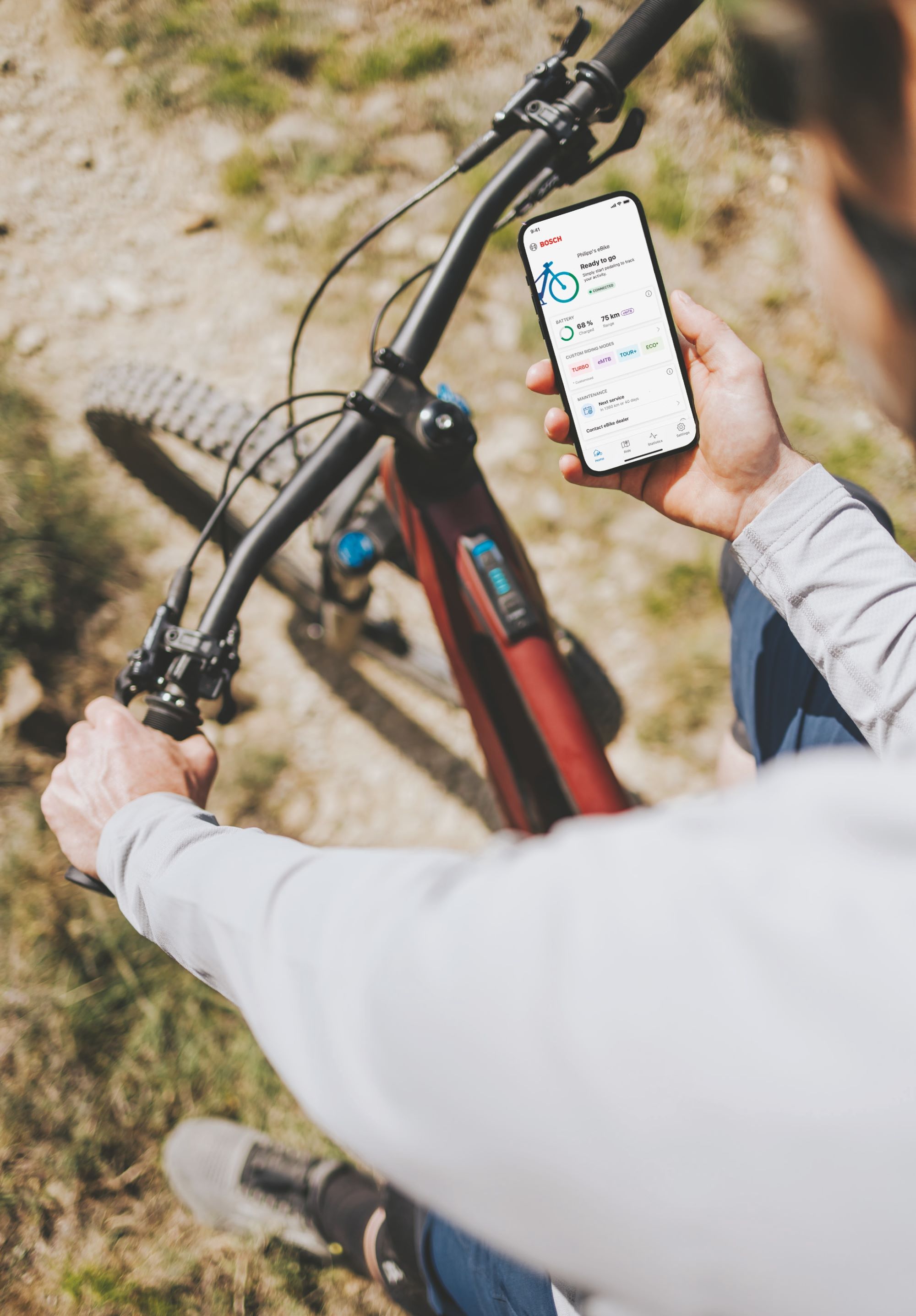
It’s all about making the tech work for you which, having started using the eBike Flow app, I’ve realised I’m all about. After all, if you’ve decided to embrace e-powered riding you might as well enjoy all the benefits.
The eBike componentry, including the drive unit, battery and display screen are fully connected and the app is the control centre. So, rather than jumping on your eBike and letting it do all the work, or having to adapt to a one-size-fits-all set up, through the Flow app you have the option to customise the eBike so it suits your riding style and needs.
In Eco or Turbo modes you can tune support, dynamics, maximum torque and maximum speed. If, for example, you still want to do a bit of work on the hills or you’re light and just don’t need too much assistance, you can reduce the maximum support level and save some battery while you’re there.
It’s all about making the tech work for you which, having started using the eBike Flow app, I’ve realised I’m all about. After all, if you’ve decided to embrace e-powered riding you might as well enjoy all the benefits. So, the app connects you with your eBike and your eBike with the digital world.
It’s all about making the tech work for you which, having started using the eBike Flow app, I’ve realised I’m all about. After all, if you’ve decided to embrace e-powered riding you might as well enjoy all the benefits. So, the app connects you with your eBike and your eBike with the digital world.
One thing I’ve really been enjoying is not having to worry so much about battery range. While your display screen is good for letting you know how much battery you’ve got left, the Flow app takes this a step further. Thanks to the on-board mapping technology, it’ll tell you how much battery it takes to do your favourite trails, based on your individual data. You can see how changing between modes affects your battery usage so you’ll know if you’ve got enough juice to hit Turbo on the last hill or you’re going to have to pedal home a bit harder in Eco. It’ll even calculate your arrival time.
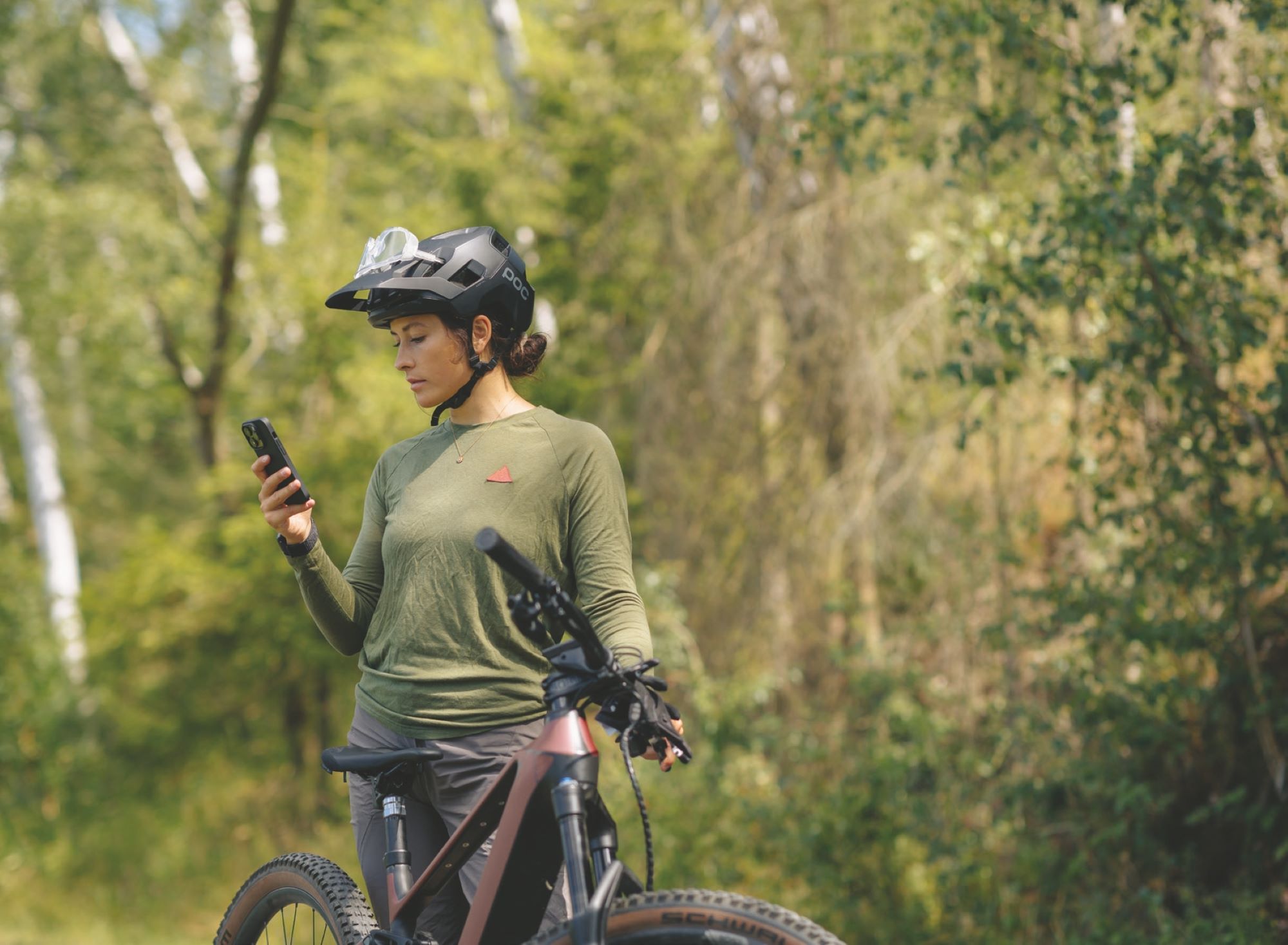
Battery status, remaining range and distance travelled are all displayed right there on the home screen along with other handy info like when your next service is due – because who remembers to put that in the diary. If you’re like me, you don’t even manage that for the car, let alone your eBike.
The navigation and route planning features also make life easier, especially if you’re scoping out new trails. You plan the route in the app and then use your smartphone as a navigation display simply by installing the Smartphone Grip (which is sold separately). Rather than just following a line on a map you can see details like junctions and descents so it’s harder to get lost. I still managed it but thankfully there’s a re-routing function, much like you’d find in a car, so I was back on the right track almost instantaneously. I imagine this would be even more handy if you’re riding in a town or city and having to deal with traffic at the same time.
The good news is you can now receive these updates over-the-air, rather than having to take your eBike to a bike store. You just download the updates via the app and transfer to your eBike via Bluetooth.
So if, like me, you’d thought that the eBike Flow app was just another activity tracker I’d recommend taking a closer look. It’ll unlock the potential of your eBike and help you up your eMTB game. Crunch the numbers, crush the climbs.

A Decade of Crankworx Rotorua
Words Lester Perry
Images Cameron Mackenzie
Crankworx Rotorua is turning ten! Ten years is somewhat of a monument and, like a child, it’s grown, learned to tie its shoes and get its own breakfast.
It’s gone from battling to educate people as to what it even is, the scale of what the organisation wanted to do, and of course finding funding and people to help along the journey, to now being a large-scale event that’s attracting high-profile riders from around the globe, and providing a stepping stone to the big time for young locals looking to kickstart their careers. Things have changed in a decade, but the underlying ethos of the event remains the same.
We caught up with Crankworx Rotorua Event Director, Ariki Tibble (aka Ari), for a look behind the curtain at how Crankworx first established itself, and some of the challenges they’ve faced on the path to reaching the ten-year milestone.
“One of the real big challenges early on was explaining to people that we weren’t trying to do a little brother or little sister version of Whistler. We wanted to do something that was unique, of the same scale, same calibre of athletes, same calibre of media, same calibre of global production,” explains Ari. “That was what we were trying to convince people of, but we had nothing to show for it. We had no imagery. If you look at some of the old promotional images of video, it’d be a cut of Whistler, and then it’d be switched to a cut of a kid and a parent pedalling around a grade three trail, and then we’d cut to an epic jump at Whistler, and then back to a person walking through the Whakarewarewa forest or going down a waterfall on the river. We had no imagery at all! We kind of bluffed our way through that first six months.”
Crankworx has surfed a wave of adversity on an almost yearly basis to pull off the event. “A lot of things have come up over the years that have been out of our control, whether it’s weather conditions or the Covid global pandemic. In every situation we’ve been through, it’s been a case of just focusing on what we can control and not losing sleep over the things we can’t, and seeing where our footsteps take us. So that’s been a real point of pride, that we’ve been able to keep everybody working together. It’s been tough on everyone, but we’re coming out the other side and it still feels like we’ve got something to offer.”
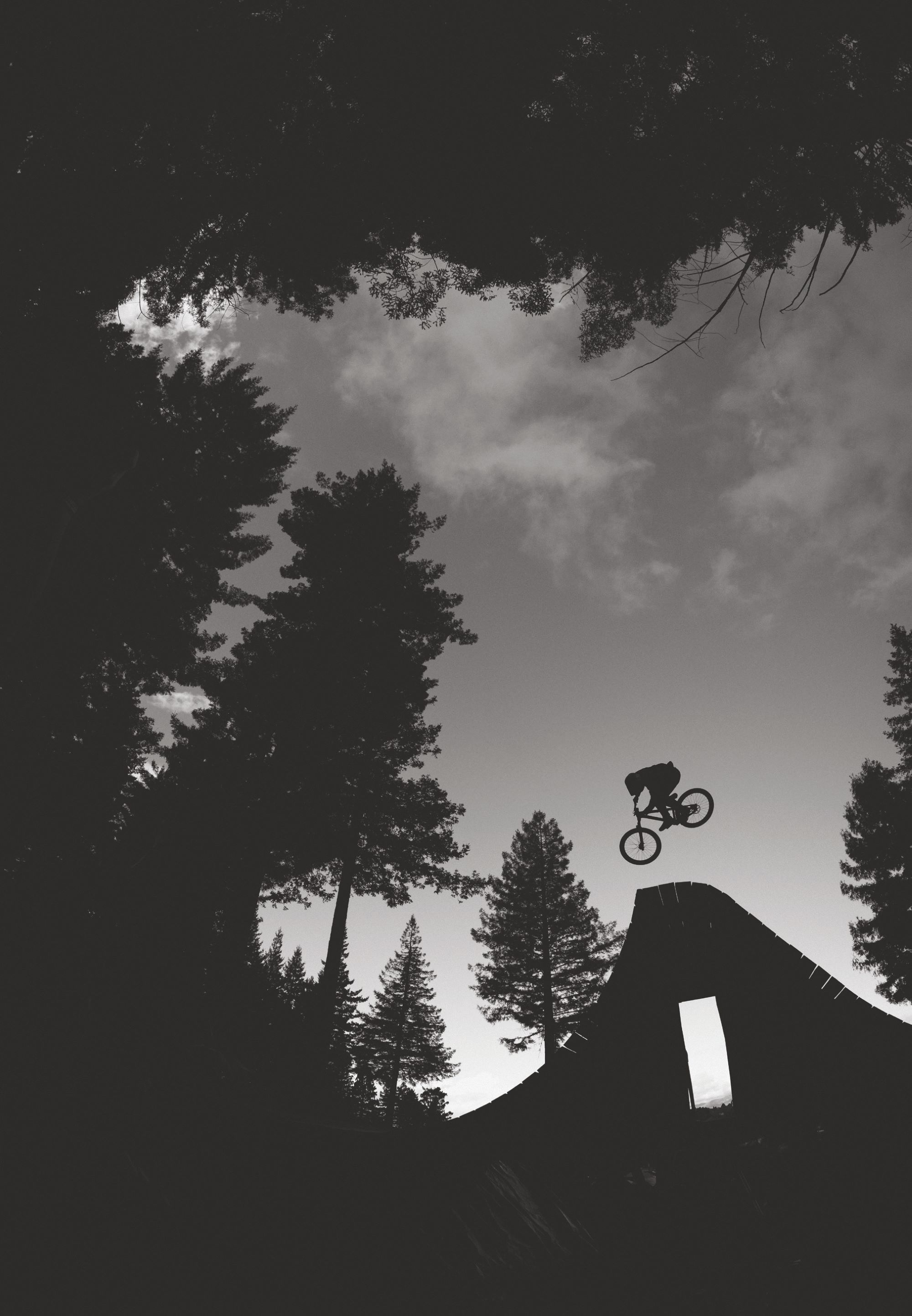
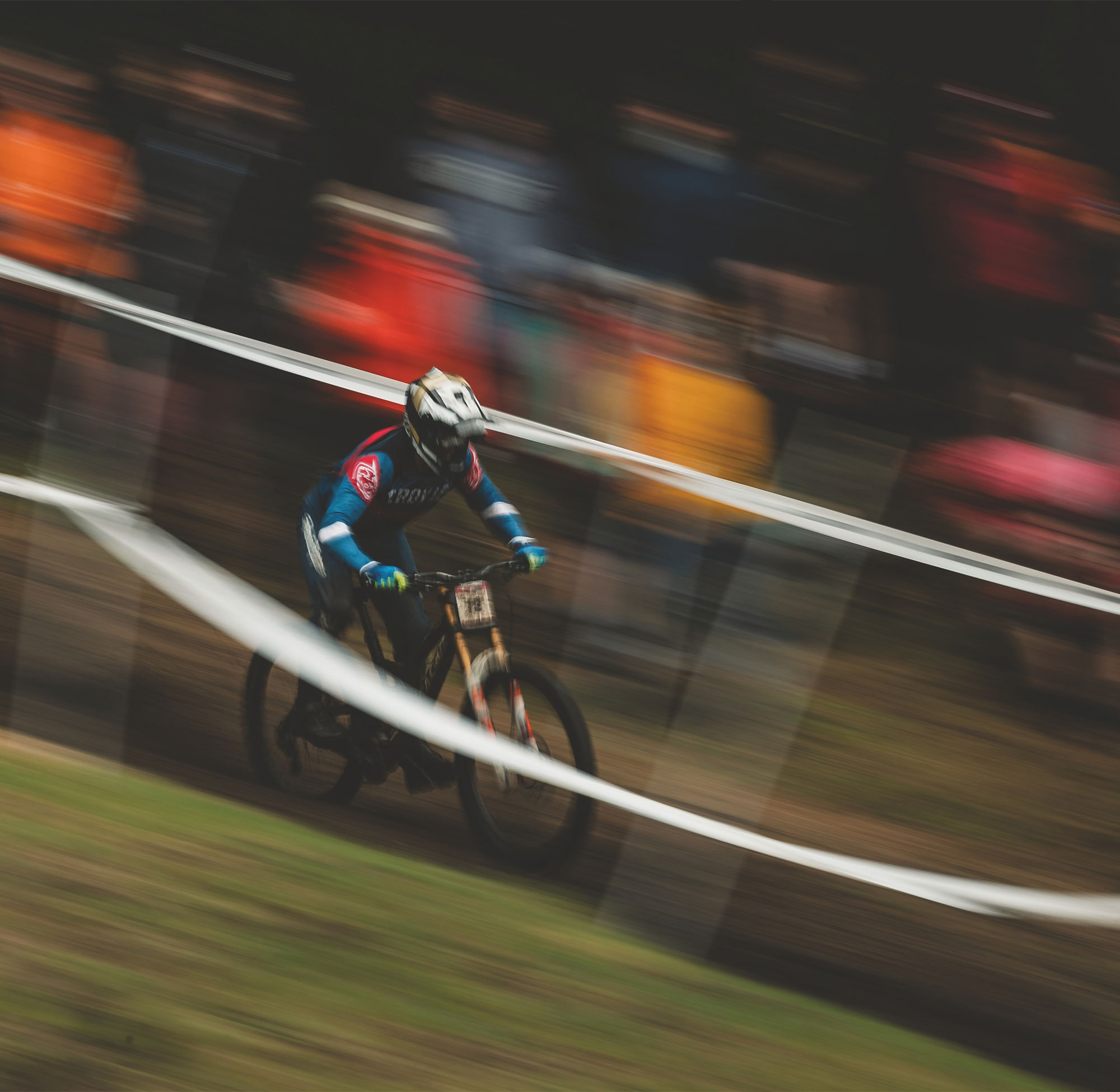
For a large chunk of the year, there’s only a very small handful of people working on this, and then by the time the event rolls, we’ve got 50 in the management team; we’ve got 150-plus in the event crew. We’ve got 300 volunteers, sponsors, media, and then a huge number of stakeholders as well.
Over the decade the face of media has changed significantly. Until the Covid pandemic hit, hundreds of international media were flocking to the event, reporting out around the globe. Post-pandemic, mainstream media outlets have struggled, and the number of visiting reporters has declined. “People are spending less resources travelling, and hiring more NZ locals to get stories. The other thing I’ve seen, is the rise of social media over that period of time as well, where you’ve got athletes who have now got reach that exceeds what a bunch of publications might have had in 2015. From an organisational perspective, that’s been a big change,” says Ari.
While the media around it has changed, so has the sport of mountain biking itself. The Crankworx festival has grown at a similar trajectory to the sport in New Zealand. Sure, there are some ebbs-and-flows, but the growth of the festival and rider numbers locally is ever increasing. “It’s been interesting to see the evolution of mountain biking in New Zealand, through the number of related businesses operating, the number of NZ athletes that are doing awesome at all levels, and the number of other epic bike events around the country.”
As Crankworx has grown and evolved over its ten years, so has the team that pulls it all together. “Each year, I’m proud of the way the team and the community come together as the event builds. For a large chunk of the year, there’s only a very small handful of people working on this, and then by the time the event rolls, we’ve got 50 in the management team; we’ve got 150-plus in the event crew. We’ve got 300 volunteers, sponsors, media, and then a huge number of stakeholders as well. And it’s like you’re trying to scaffold one big brain together to get it to work with some degree of harmoniousness. The fundamentals are the same as any event that you run, whether it’s 50 people turning up or thousands – the volume of connections required – it’s like making one big brain, and then you pull the whole brain together again within about a week after the event, the whole thing, every neuron just detaches. So, yeah, the proud part is when we get a brain that feels like it’s working the way it should – that’s epic.”
The opportunity to compete in your own backyard, against some of the sport’s biggest names, is something only a small percentage of riders around the world get to do.
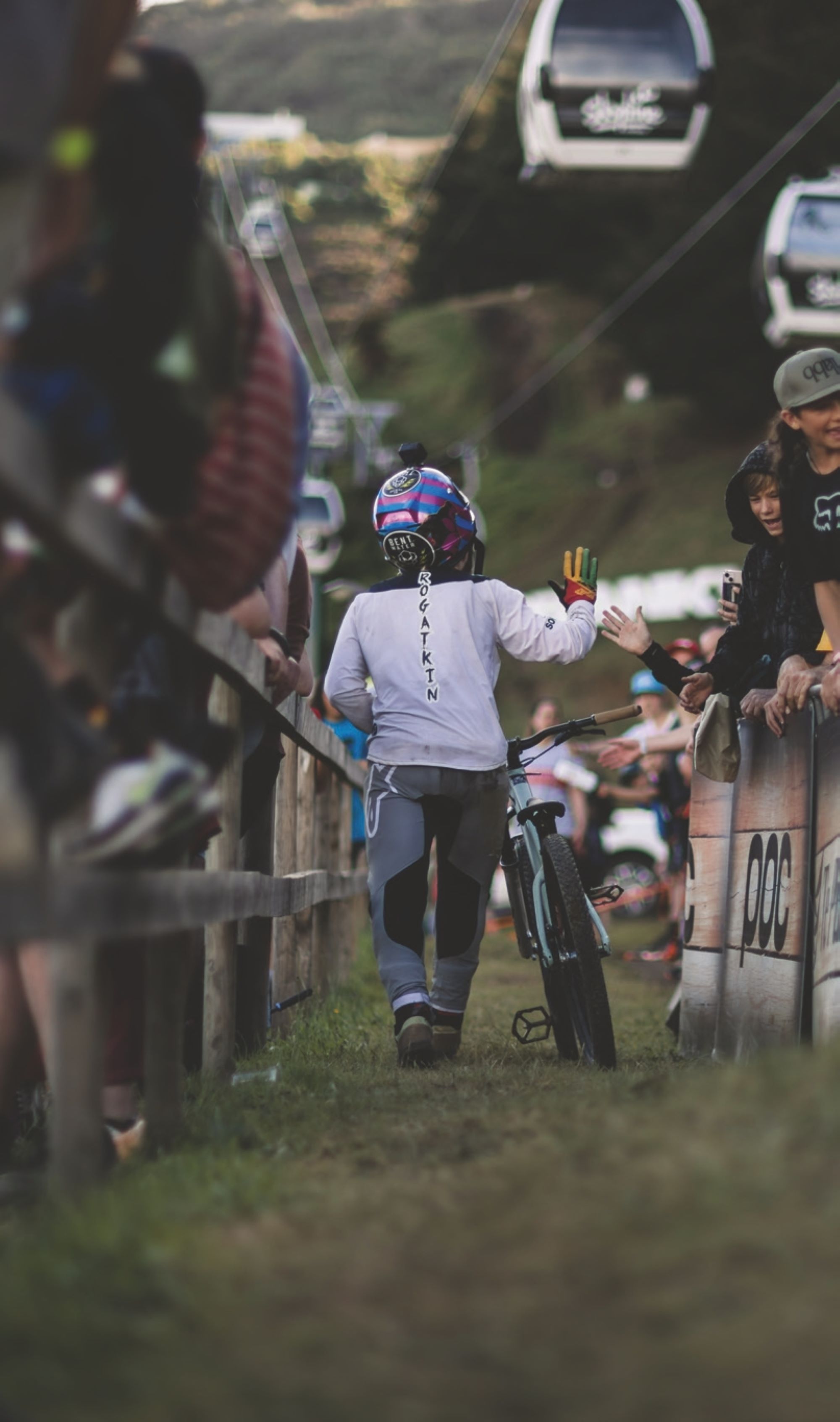
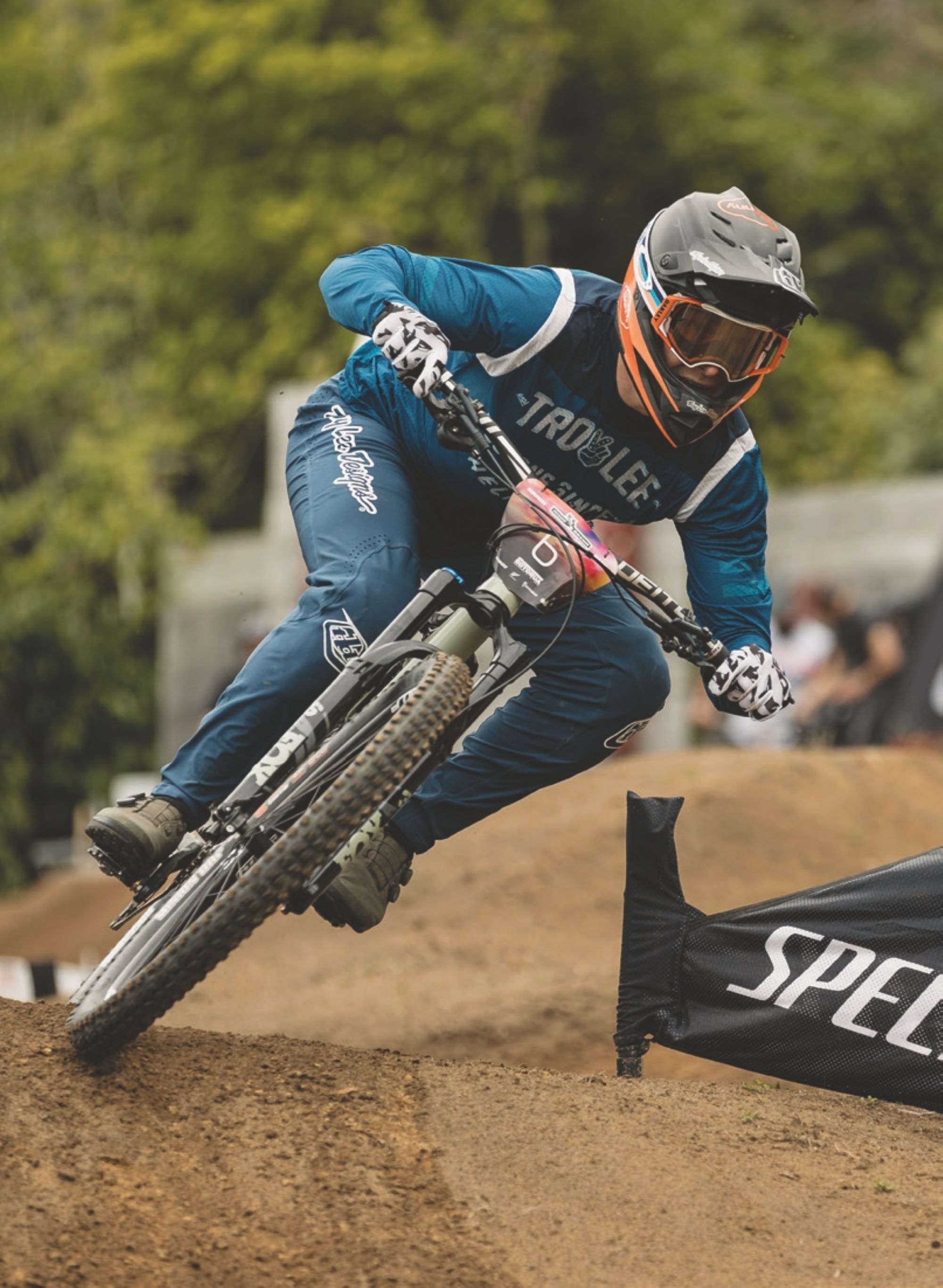
In many ways, Crankworx has become an annual barometer or yardstick for local athletes who’ve grown up around the event, many growing from initially racing in the Kidsworx events, or watching on the sidelines, to competing against their heroes.
In many ways, Crankworx has become an annual barometer or yardstick for local athletes who’ve grown up around the event, many growing from initially racing in the Kidsworx events, or watching on the sidelines, to competing against their heroes. The opportunity to compete in your own backyard, against some of the sport’s biggest names, is something only a small percentage of riders around the world get to do. Alongside the experience gained racing against these internationals, the exposure riders get to such a huge audience, and simply competing in the pressure cooker environment, helps give them a leg up, instead of starting at zero when they eventually head off shore to compete in someone else’s backyard.
For 2024, the North Island Schools MTB Champs will run within the festival. Previously having the NZ Schools MTB Champs running alongside the festival in 2017 and 2018 and seeing a three-fold increase in competitor numbers year on year, the team were keen to involve the future of the sport once again. “Unfortunately for us, the National Schools Champs has moved towards the end of the year, but this has meant we’ve been able to partner with Rotorua Mountain Bike Club, Cycling New Zealand Schools and Mountain Bike New Zealand, to get the North Island Schools Champs back once again for the 10th anniversary. I feel like it’s going to be such a good competition,” says Ari. “I just can’t wait to get the schools back involved. Every student who competes gets tickets to the rest of the event as well. So they can go up and check out the other young people their age competing in the CWNEXT categories, or in some cases, knocking on that elite door. It’s just such a vibrant, cool community in the school space. I can’t wait for that!”
Ten years also brings the introduction of the first ever official Crankworx Women’s Slopestyle Event. Progress of the sport over the last couple of years has been rapid, with women eager to up their game and be represented on the biggest stage. “It’s been a really long, slow build, and it’s taken a long time to get to this point. It started with things like equal prize money back in 2015. Then we actually did a women’s speed-and- style event a few years ago. Sometimes it’s the right idea, but not quite the right time. It can be a bit of an art to pick the right moment, but it’s definitely felt like the ground’s been swelling towards this moment for a while. When the Slopestyle course was redeveloped in 2021, part of the brief was with this in mind. Hopefully it sets a new bar, and then we watch the tide rise.”

Keeping it grassroots: Queenstown Mountain Bike Festival
Words & Images Riley McLay
CLOSE YOUR EYES. DREAM OF A PLACE BRIMMING WITH ADVENTURE, SET AGAINST ONE OF THE MOST STUNNING BACKDROPS YOU’LL EVER SEE. A PLACE WHERE JAGGED CLIFFS BORDER AN ADRENALINE- PUMPING PLAYGROUND FOR ALL OUTDOOR THRILL SEEKERS. WHERE DEEP BLUE RIVERS MEET AND THE SUN GLOWS LIKE LIQUID GOLD, ECLIPSING THE SURROUNDINGS. A PLACE WHERE THE HARDEST CHOICE IS PICKING FROM A NEVER-ENDING LIST OF SEAMLESSLY FLOWING TRAILS SCULPTED INTO THE HILLSIDE. A “YES!“ TOWN, WHERE A DEEP-ROOTED PASSION IS SHARED FOR ALL THINGS TWO-WHEELED. EVERY FACE YOU MEET RECOUNTING A UNIQUE TALE OF HOW THEY FOUND THEIR WAY TO THIS UTOPIA. ALL AWAITING THE ACTION-PACKED EXCITEMENT THAT COMES WITH THE QUEENSTOWN BIKE FESTIVAL; THE CELEBRATION BOLDLY MARKED ON CALENDARS NEAR AND FAR.
Finding its foundation with pioneering endeavours like bungee jumping and jet boating, Queenstown embodies an enduring spirit that locals have embraced, whilst continually pushing the boundaries – and this remains true today. In the winter months, the sight of snow blanketing the Southern Alps was the perfect way to bring the town’s inhabitants together. However, this was fleeting, and at the first sign of summer, white powder would be exchanged for golden dust. Similar to the miners who once explored the region, mountain bikers found the Whakatipu Basin an ideal place to chase their own gold- dust dreams. As the sport gained popularity, it became increasingly easier to grow this once-niche activity into the all-encompassing community that exists today, ultimately resulting in Queenstown’s transformation into one of mountain biking’s meccas. With a range of trails catering to everyone from the novice mountain biker to the visiting pro, wider Queenstown can boast six bike parks – three of which are lift- assisted – and an unbeatable après-ride scene. What was once known predominantly as a winter adventure hub has quickly become a world- renowned destination for all things biking.
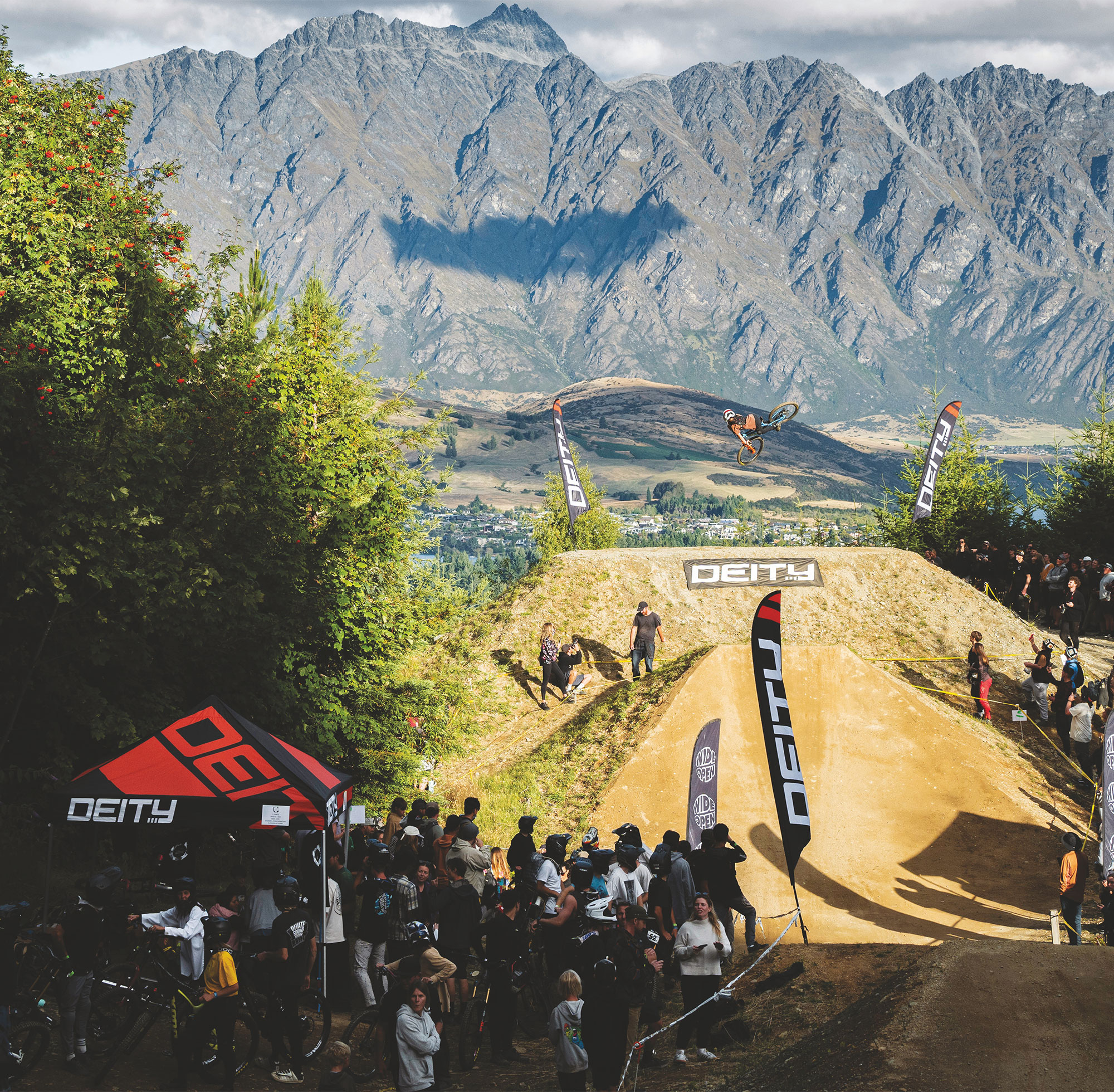
Growing up in this alpine paradise has allowed me to witness first-hand the expansive growth that this once-sleepy village has undergone in recent years.
The quintessential peak of the summer season for the resort town is met with the arrival of the Queenstown Bike Festival. It’s almost cliche to say, but the whole atmosphere of the town erupts into a celebration of the mountain bike community. The Queenstown Bike Festival is an annual celebration of various facets of cycling in the area, including races, competitions, and other two- wheeled gatherings. The festival, organised by the Queenstown Mountain Bike Club, has received widespread acclaim each year – captivating the attention of those who may not have been initially interested in biking, while also spotlighting the mountain bike community to a global audience. In the early years, events like the Dirt Masters DH managed to do this effortlessly by catching any last-minute spectators that may not have had the festival on their radar. The race had riders finishing right in the middle of town, down the infamous Brecon Street stair set. Racers were always met with a round of applause, especially if they tried to test their luck and double a set of stairs. The slopestyle, held in the middle of town, was also a crowd favourite. Having a custom freestyle course packed into the centre of town was an impressive achievement, and being able to watch local riders like Kelly McGarry and Conor Macfarlane compete against the best in the world made the spectating even better. Even from its inception, the FMB world tour event was able to attract international competitors to the festival. This, along with the timing of other high level events, like Crankworx Rotorua, gave Kiwi riders a great opportunity to stack up to the foreign talent making the pilgrimage south. As a young grom, the sheer number of professional riders navigating the town at times felt somewhat surreal. Pulling up to any local trailhead and having a good yarn with your favourite rider dissolved any perceived barriers to connecting with these individuals. It bridged the gap, and fostered the realisation that we are all simply part of the same community. Plus, it’s always a pleasure to admire these athletes tackling the trails and enjoying them as much as you do.
Hosting the event solidifies Queenstown’s place on the mountain biking map, making it a dream destination for those wanting a bike- oriented holiday as well as those wanting to test their skills on the variety of trails on offer.
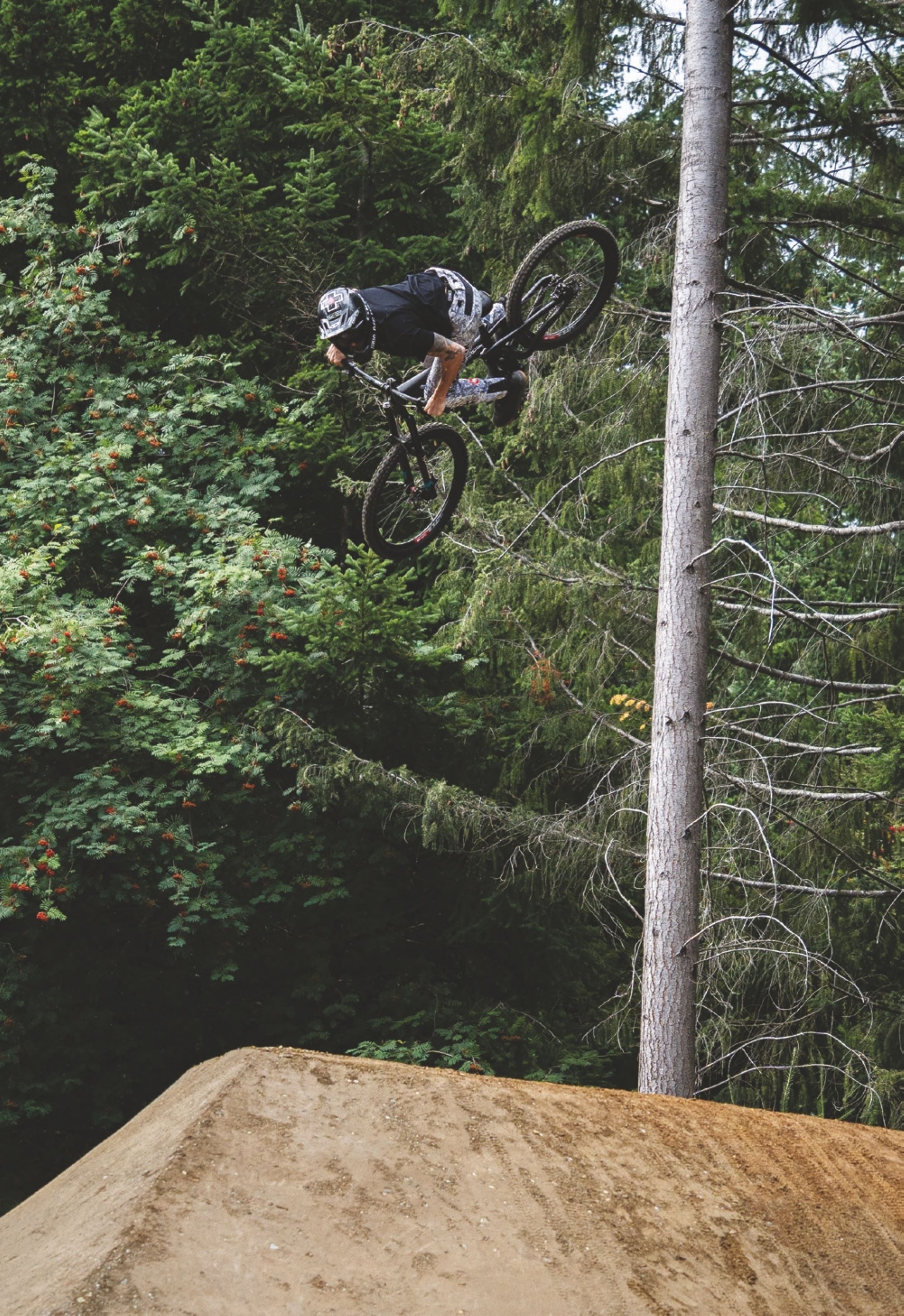
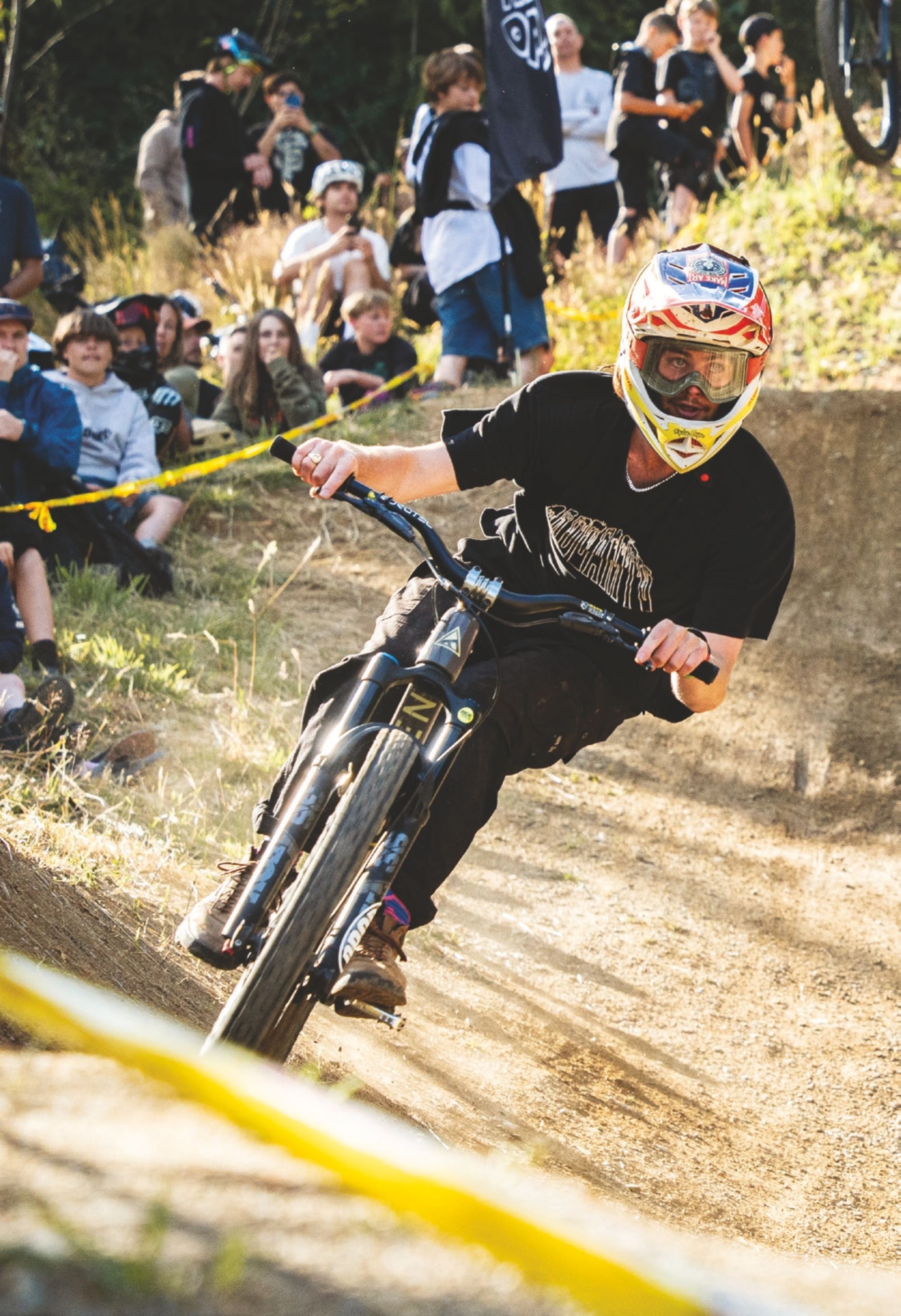
The festival returned this past January with almost double the attendance compared to previous years. Its popularity was evident to see during this time, given the abundance of bikes strewn across the CBD and the amount of dust-covered patrons pouring out of local cafes and pubs. I had to take a step back and acknowledge how far the event had come, considering the number of people living outside of town who were making the journey for the festivities. Observing not only 3 8 New Zealand Mountain Biker the festival but the town’s ability to attract riders ranging from casual to pro levels, is a testament to the quality of the riding here.
This year’s iteration of the festival has evolved significantly since its inception, now hosting over 30 different events over its 10-day duration. As well as holding spectator favourites like the slopestyle and whip-off, event directors Emmerson and Meagan Wilken want to appeal to a wide-ranging demographic of mountain biking disciplines. The introduction of more family-friendly events such as the pump track and dual slalom races, invite riders of all ages to compete, learn new skills and, most of all, create long-lasting memories for the future. The addition of the likes of the social gravel bike ride also covers an often overlooked side of the scene. The emphasis on inclusivity carries over to the organisational side of the festival; “We are always overwhelmed with the amount of people that come out of the woodwork to lend a hand in any way they can,” says Emmerson. The effectiveness of the ‘many hands make light work’ mentality not only extends to the 100- plus volunteers, but also to the riders involved in the events who also do their bit to make sure the festival goes as smoothly as possible.
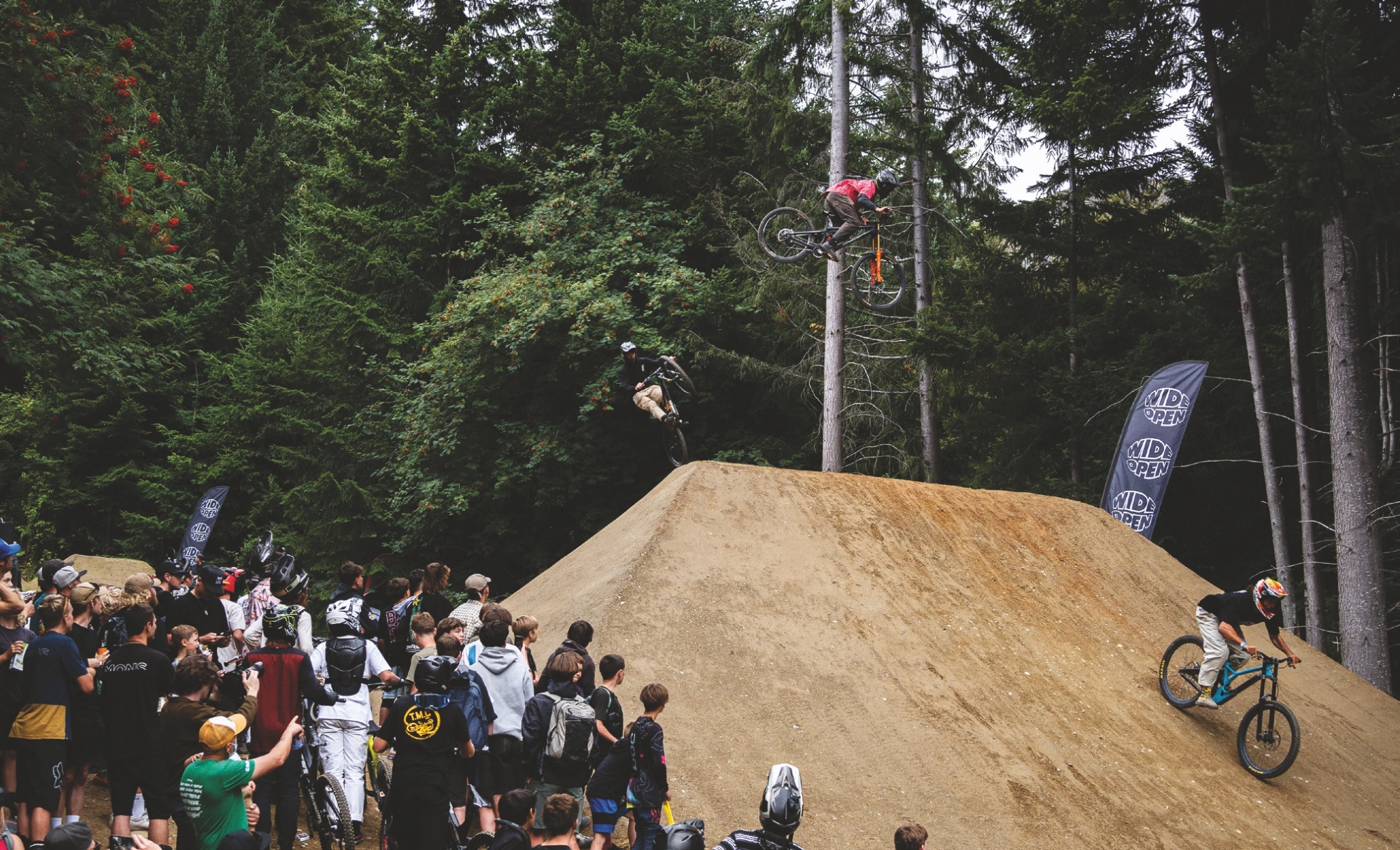
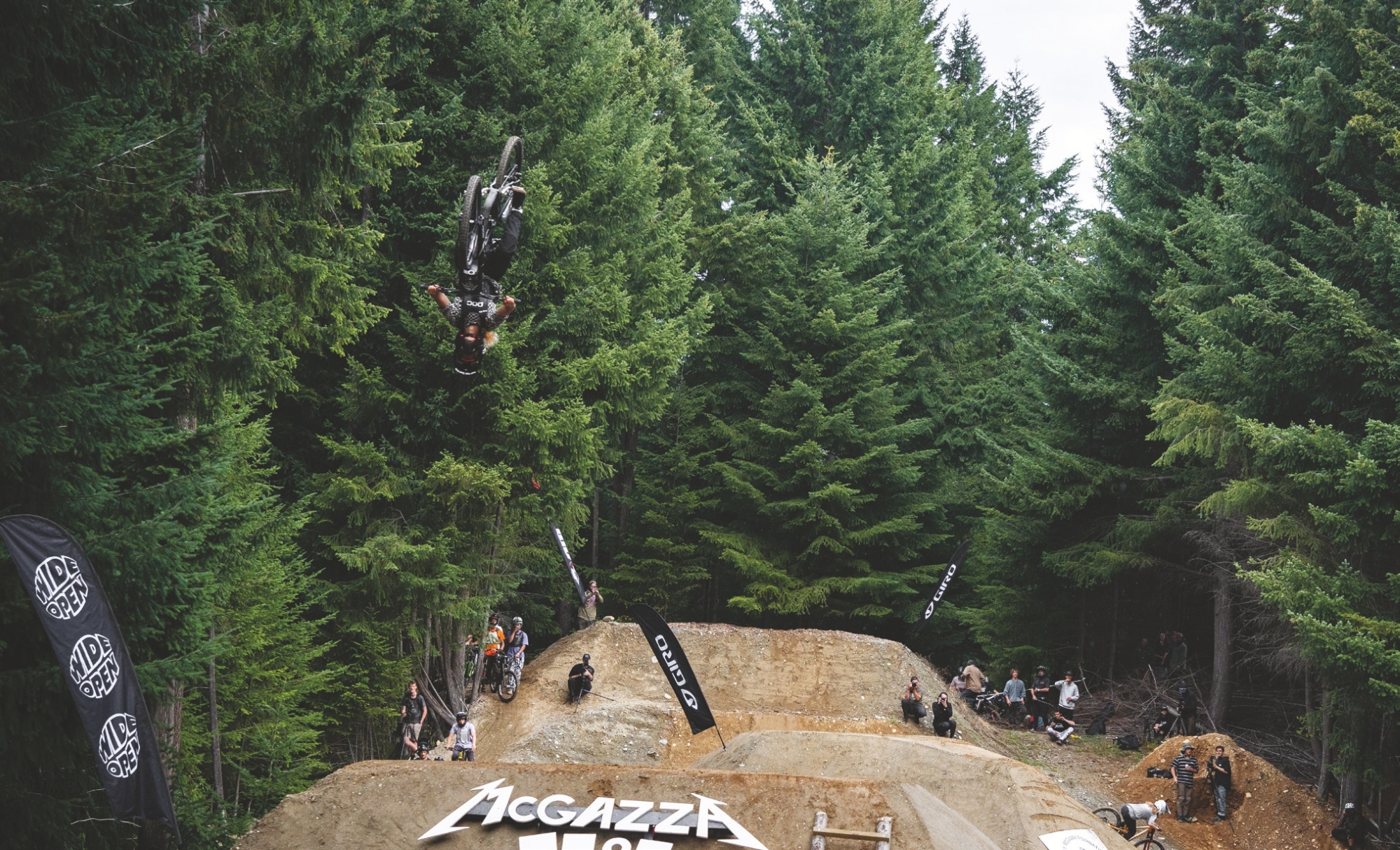
It was very empowering to see Kelly’s legacy continuing to inspire not only a new generation of male riders, but female riders as well. It was remarkable to see the highest number of female riders ever participating in the McGazza Dream Jam, with the standout moment being Robin Goomes’ backflip on the main hit, sending the thousands-strong crowd into hysterics.
The Queenstown Mountain Bike Club’s devoted efforts to fine-tuning the existing trail infrastructure, and creating high level facilities, means riders are offered the best opportunities for progressing their skills. This in turn enables riders to progress their skills more rapidly while still being in a safer environment. This was most evident with the impressive battle in the junior men’s category in the slopestyle event at the Wynyard Jump Park between local groms, Riley Baker (12), and Angelo Decadi (13). Both showed a level of maturity in their riding well beyond their years and let the scene know what is to come in the future. There was also an impressive showing from young phenom, Camden Rutherford (14), taking the overall win in the men’s category at the Skyline Whip Off. To say Camden can whip a bike is an understatement, with some of his whips bringing his back wheel up to his head! He definitely showed up a pro rider or two in attendance.
The improving mountain bike facilities in Queenstown benefit not only the youth rider contingent, but also the ever-growing female scene. As the number of female riders in mountain biking reaches new heights, the Queenstown Bike Festival is committed to fostering female participation while aiding the existing momentum towards progression. The festival wants to build upon the foundation of other local events, like the Future Ground Progression Camp, to create an environment of inclusiveness and inspire more female riders to venture outside their comfort zones and give freeride and freestyle competitions a go. In 2023, the Queenstown Bike Festival Slopestyle was the first-ever female FMB World Tour event hosted in New Zealand. It was a long time coming, with many female pro riders like Robin Goomes and Harriet Burbidge- Smith already using the resort as their training base during the Southern Hemisphere summer. This year’s bronze event, the first event of the FMB season, was used as a stepping stone for riders to gain enough points to compete in the Diamond female slopestyle event being hosted at Crankworx Rotorua. The lure of this chance to compete at a higher level encouraged an increase in participation and gave younger female riders an excellent opportunity to ride right beside their idols, giving them first hand exposure of what these events are really like. The rise in participation was also evident throughout the McGazza Fest weekend of the festival. Seven years have passed since the tragic loss of the freeride legend, yet Kelly McGarry’s pioneering spirit – and his impact on the sport – continue to enhance New Zealand’s standing on the global mountain biking scene. It was very empowering to see Kelly’s legacy continuing to inspire not only a new generation of male riders, but female riders as well. It was remarkable to see the highest number of female riders ever participating in the McGazza Dream Jam, with the standout moment being Robin Goomes’ backflip on the main hit, sending the thousands-strong crowd into hysterics.
The Queenstown Bike Festival’s organisers have their sights set on continuing to provide a fully engaging product for the local and wider bike community alike, whilst maintaining the grassroots vibes that the festival is known and loved for.
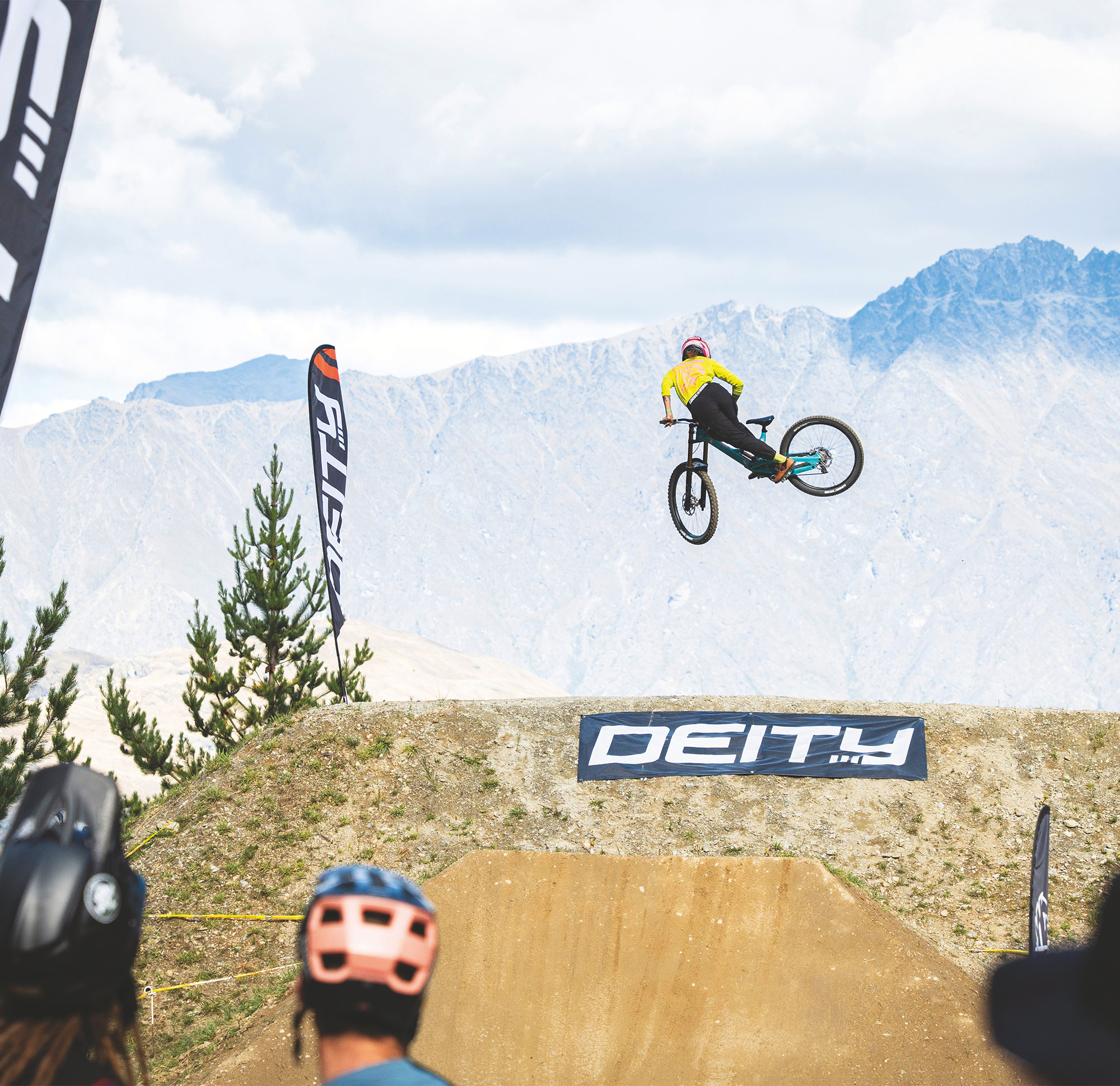
With the vision of the event organisers, and enthusiasm from competitors and attendees alike, the Queenstown Bike Festival looks set to be a jewel in Queenstown’s crown for years to come. In collaboration with the Queenstown Mountain Bike Club, there are a number of exciting ideas in the pipeline, including a long-term plan to have a permit Slopestyle-specific facility, similar to the one constructed in the Queenstown CBD years ago. This, along with the increase in participation numbers, involvement from the biking community at large, and diversity of events held throughout the duration of the festival, ensures not only mountain bikers and cycling enthusiasts benefit from it, but the wider community of Queenstown does too. Hosting the event solidifies Queenstown’s place on the mountain biking map, making it a dream destination for those wanting a bike- oriented holiday as well as those wanting to test their skills on the variety of trails on offer. The Queenstown Bike Festival’s organisers have their sights set on continuing to provide a fully engaging product for the local and wider bike community alike, whilst maintaining the grassroots vibes that the festival is known and loved for. With the plethora of young riding talent who call Queenstown home, combined with the high level of international pros who frequently visit our shores, it’s easy to see how a festival that brings the community together has become such a highlight on the summer calendar. As someone who has grown up within the Queenstown mountain bike community, I’m excited to see the pioneering mentality of the area continue to flourish, and to see how it will shape the future of the festival in years to come.

Tour du Mt. Blanc
Words & Images Riley McLay
Imitation can be a dangerous thing. As a bike hungry teenager, I spent many of high school days hiding behind a computer screen watching the latest mountain bike edits and documentaries. One of the most noteworthy was a specialized bikes mission where ‘Matt Hunter Tours Mont Blanc’. In the video, Canadian Freeride Legend, Matt Hunter, takes a crew to attempt the Tour Du Mont Blanc: A 174 km loop that fully circles the breathtaking mountain that is Mont Blanc. The Tour Du Mont is a spectacular but challenging multiuse alpine route, where hikers and mountain bikers traverse three different countries through some of the most stunning scenery the Alps has to offer. I have always been captivated with the riding in the Alps. High speed single trail that cuts through the Mammoth landscape with ease. This is shown best by Matt and the crew as they make the Tour Du Mont Blanc their own. The way they showed off the different flow and rough terrain made it something I had to tick off my bucket list. Lucky enough for me, I had chosen to spend the 2023 New Zealand winter vanlife-ing around Europe, taste testing as much of the riding it has to offer. The Euro Tour eventually led us to one of the mountain biking meccas: Morzine and the Portes Du Soleil area in France. Reluctant to take a break from the gravity fed action, it was timw to take on the monster. Joining me on this adventure was a good friend of mine, Fynn Thompson. Fynn, a carpenter from Queenstown who has represented New Zealand in triathlon, is no stanger to getting into the pain cave. A few weeks prior, Fynn had completed the hope 1000, an extremely difficult bikepacking route traversing from one side of Switzerland to the other. The only bikepacking experience I had was completing the Old Ghost Road a couple of years prior. With the Tour Du Mont Blanc having 8, 040 metres of climbing, we knew it was not going to be a walk in the park. Especially with the recommended time to complete the loop being five days. With our tight schedule, we decided to attempt the loop in three days.
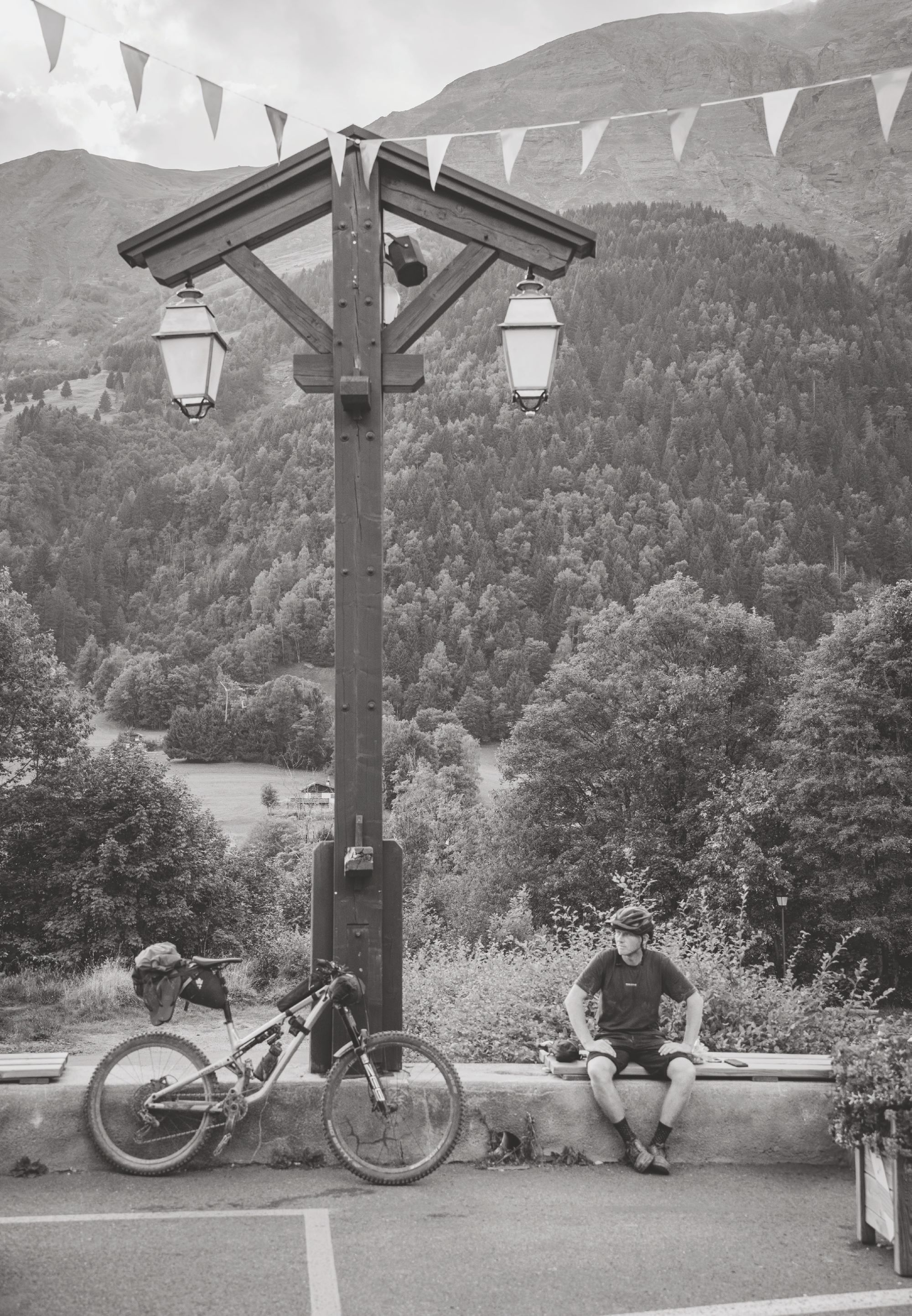
Day One
We started our journey first thing in the morning in the Quaint French Town of Les Houches, roughly a 45 minute drive from Morzine. Les Houche is a ski resort with tree lined slopes that are combined with impressive views of the Mont Blanc Mountain Range and the Chamonix Valley.
Our weapons of choice for this mission was something of an exercise in ‘run what you brung’. We had only brought one bike each from New Zealand to tackle anything Europe had to throw at us. Fynn was running a 170mm Commencal Meta mullet and I was on a 160mm full 29er Marin Alpine Trail. Not your traditional bikepacking rigs, but the extra travel would definitely come in handy. Fynn was also running three different bike bags on his bike (on the bars, under seat, and top tube) whereas I had elected to run just a bar bag and a 50 litre hiking pack. I had run a backpack on my previous bikepacking experience; however, I was going in knowing it wasn’t the most ideal set up as you want to keep as much weight off yourself and on the bike as possible. We also planned on wild camping for the two nights on the tour.
After a quick breakfast and coffee it was time to begin. Our first slight descent into Chamonix would be one of the only times our tyres would touch the sweet smoothness of asphalt. The TMB loop can be ridden in either direction, however we chose to do it clockwise as the climbs are a lot more bike friendly and the downhills are more enjoyable going this way. Reaching the town centre at the base of Mont Blanc would give us a true perspective of the grandness of the size of it. Mont Blanc is the highest mountain in both the Alps and all of Western Europe, with the peak situated at 4,807 metres above sea level. Chamonix also acts as an extremely popular base camp for all the types of alpinism activities that the mountain offers. Chamonix was the last place to grab any supplies, so we decided to have another fuel up at one of the local bakeries. Any opportunity to grab food or water was always taken, as there would be long stretches on the track that would be isolated from civilization. Making sure you are eating and drinking enough water is vital in a mission like this. The weather in the Alps can be extremely varied with scorching temperatures one day and fresh snow on the hills the next. However, we were lucky to be hitting a very settled weather window of clear skies and reasonably light winds. Even with us attempting this at the start of September, the tail end of summer, the temperatures were still hitting the early 30s at the peak of the day.
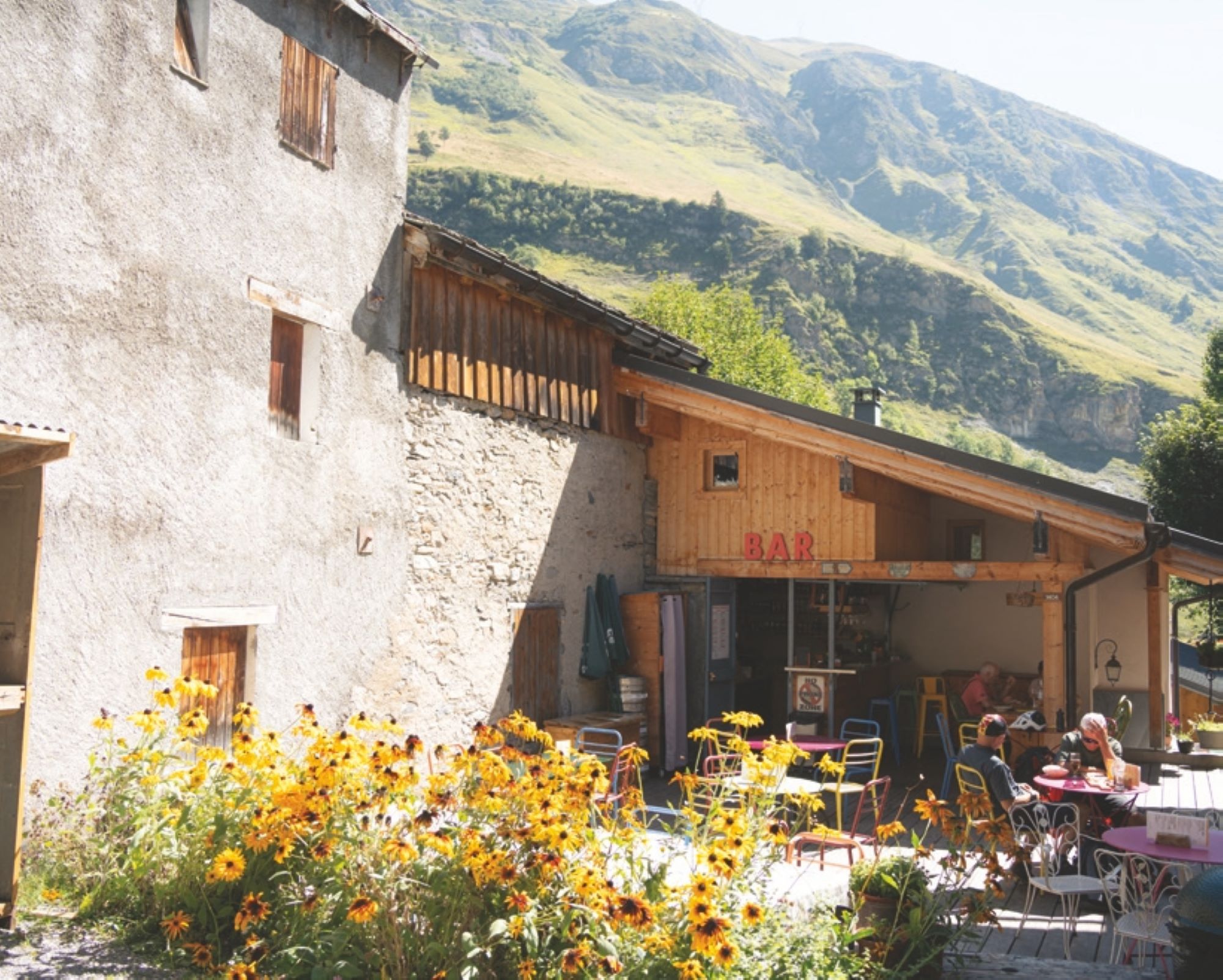
Reaching the town centre at the base of Mont Blanc would give us a true perspective of the grandness of the size of it. Mont Blanc is the highest mountain in both the Alps and all Western Europe, with the peak situated at 4, 807 metres above sea level.
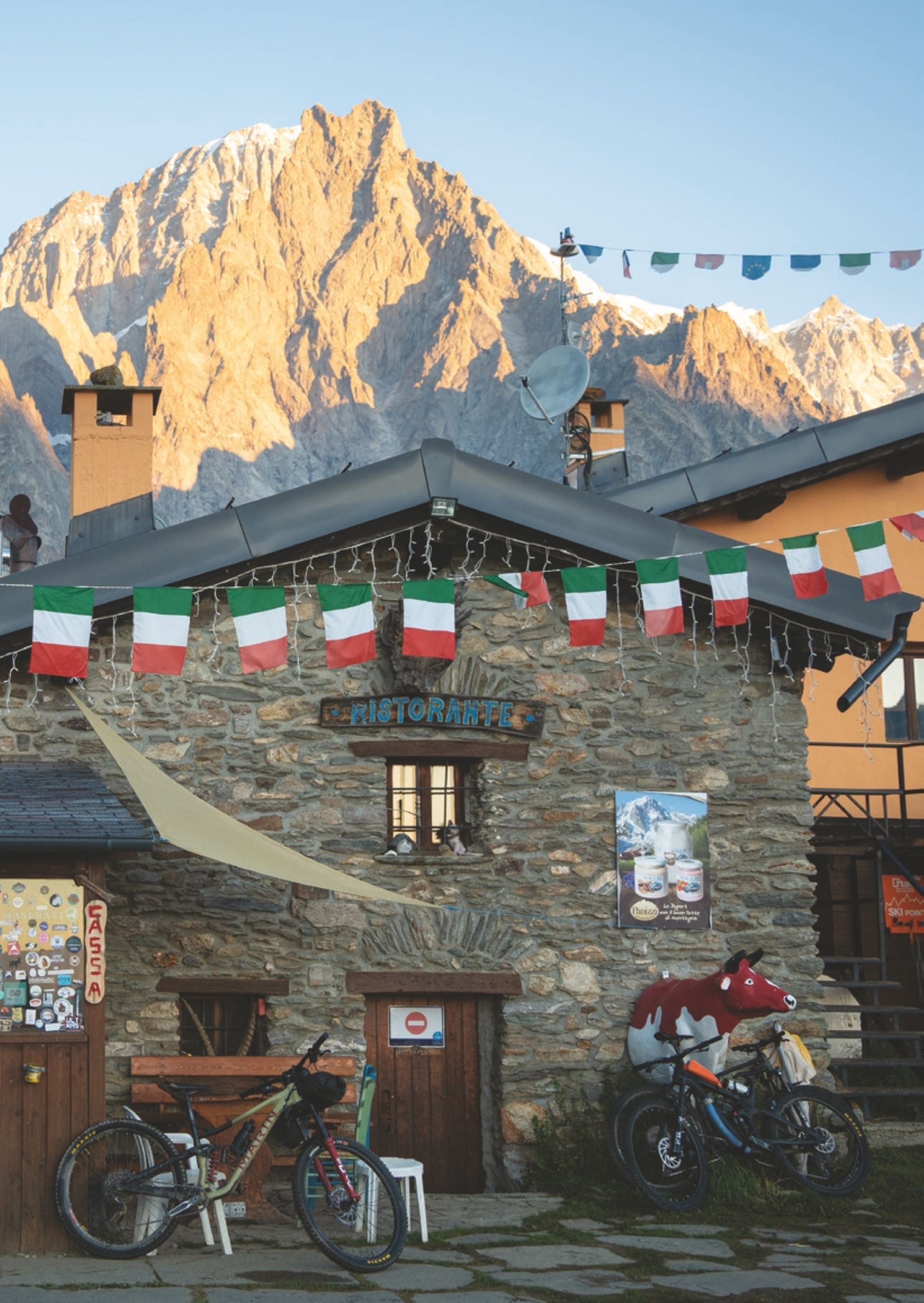
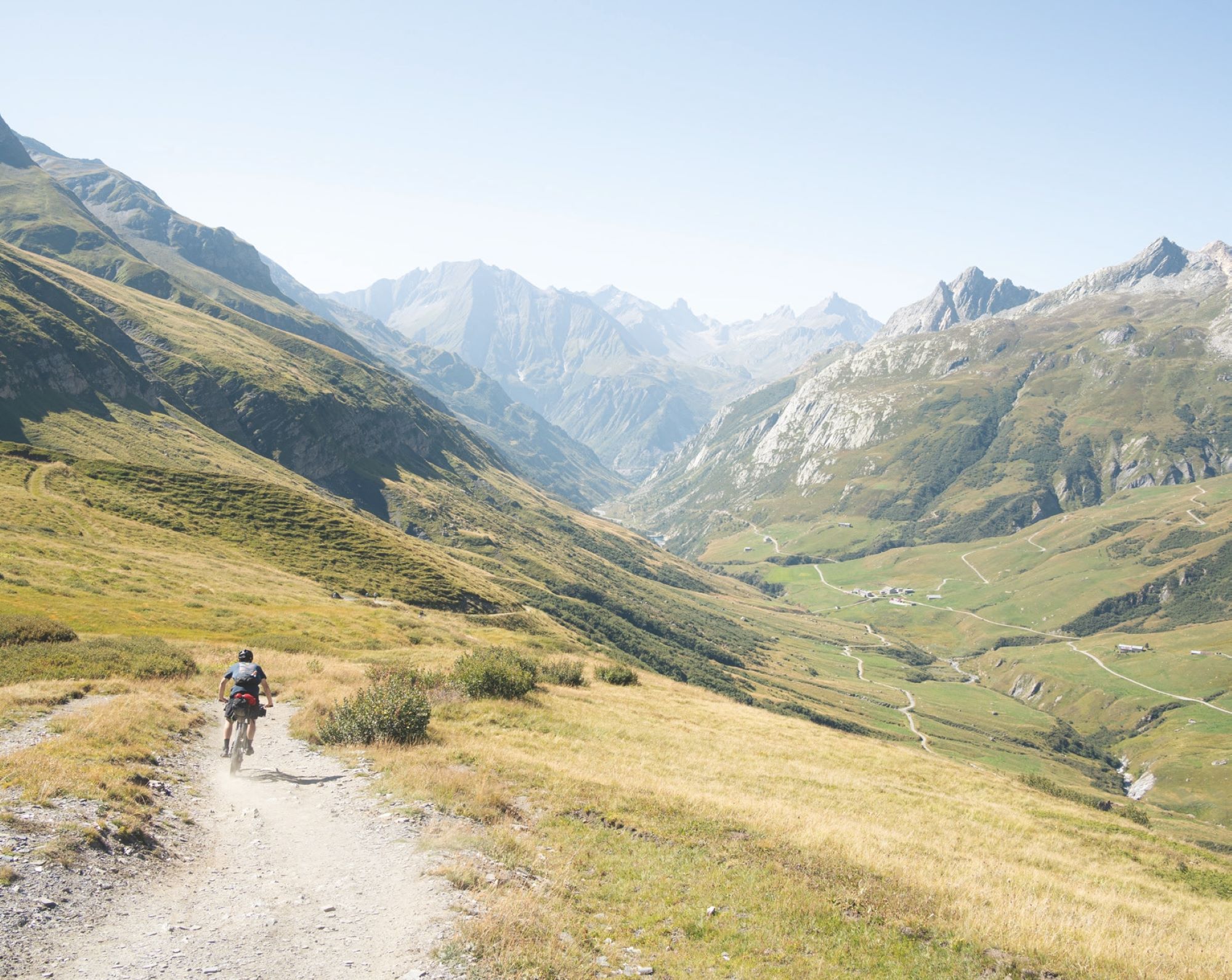
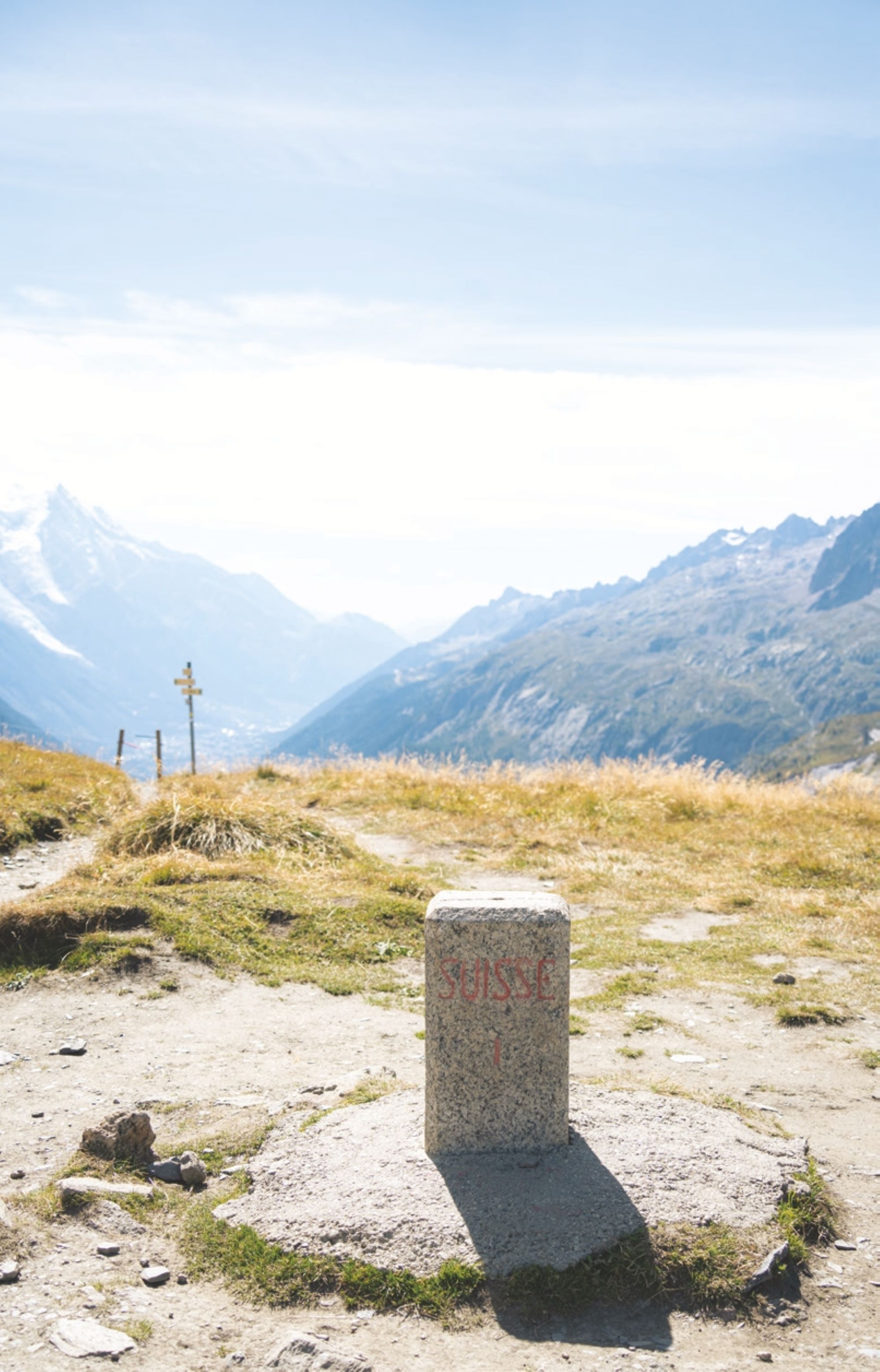
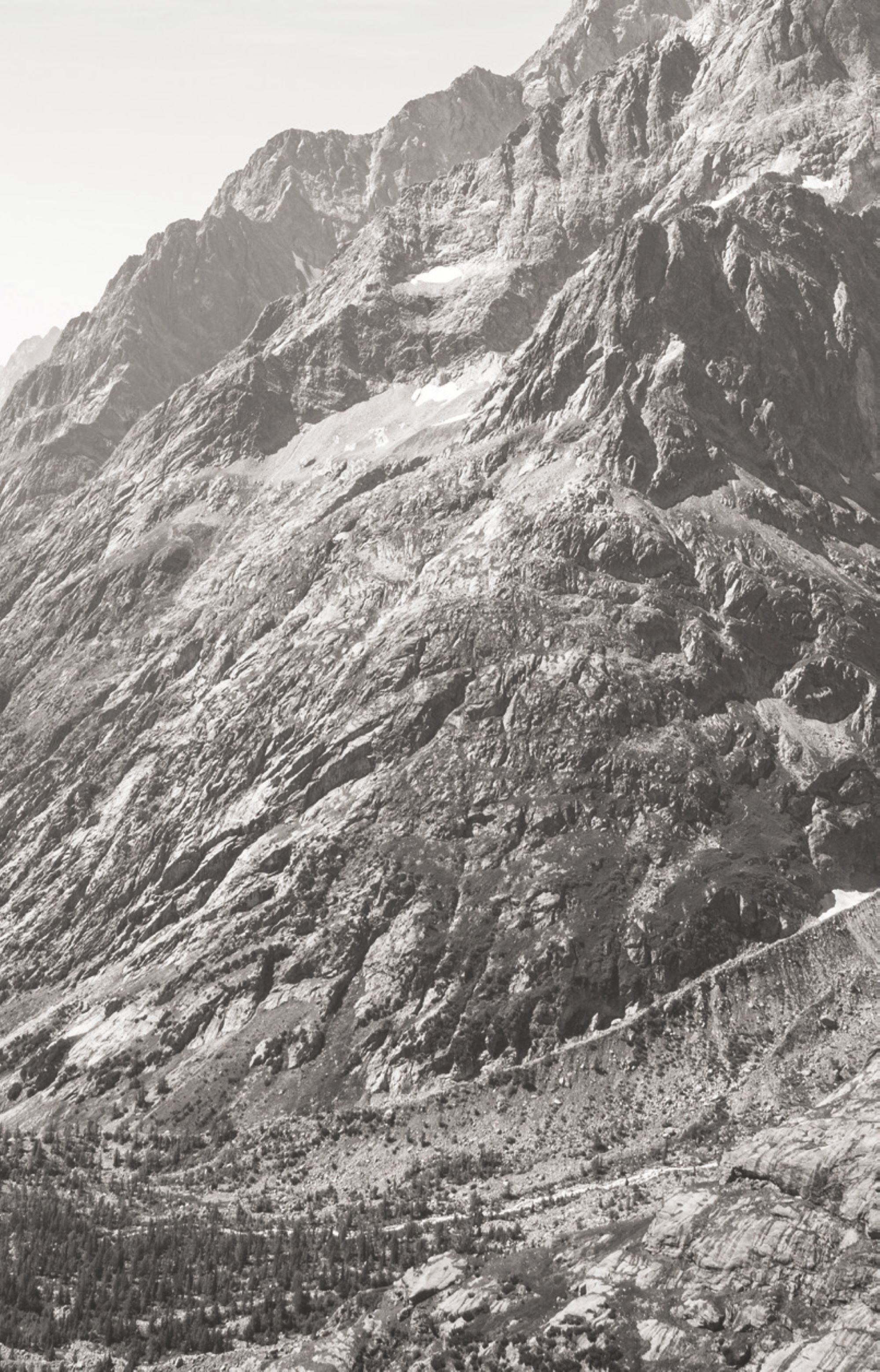
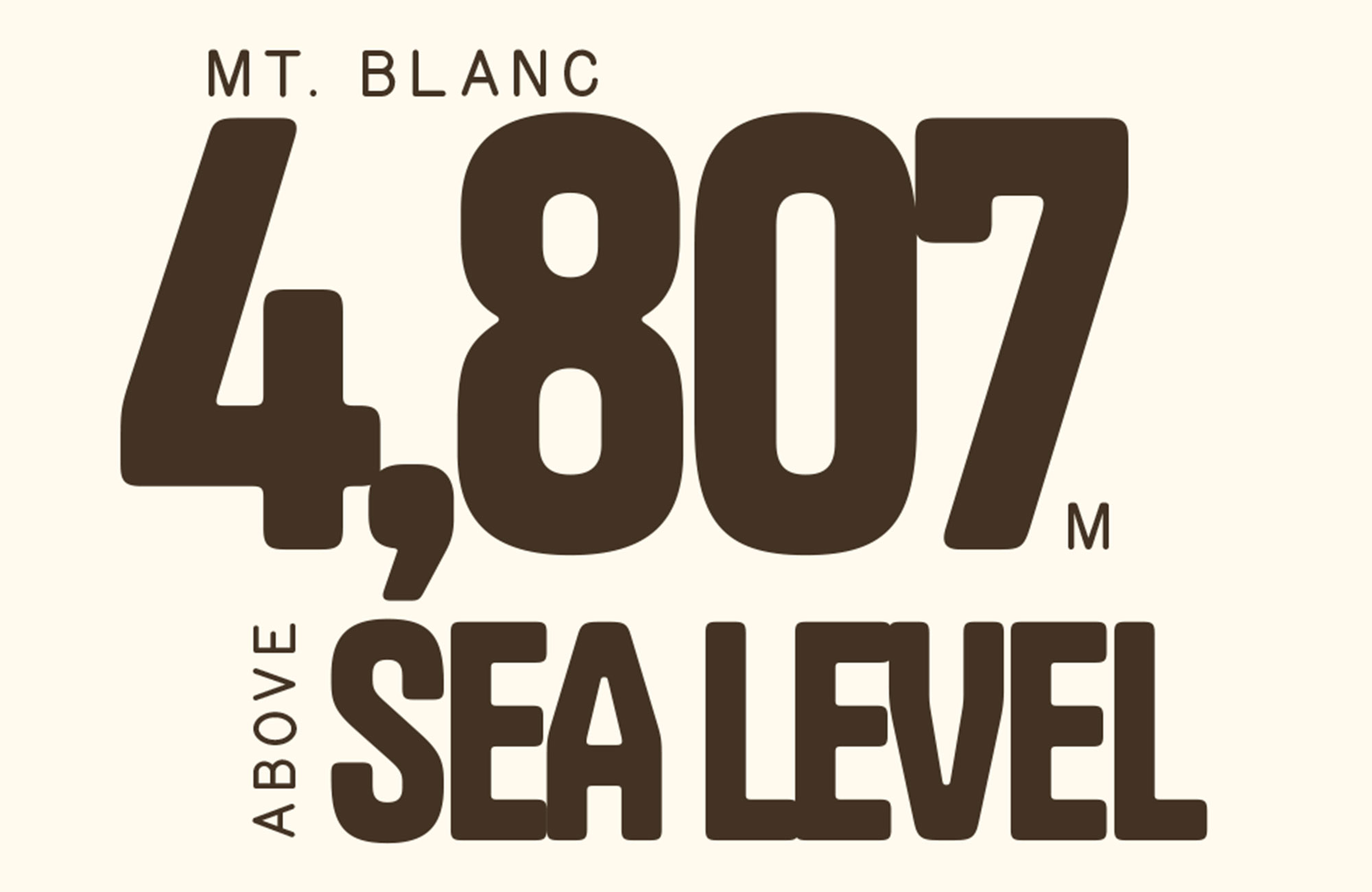
We made our way out of the hustle and bustle and onto the first bit of single track, following the river out of Chamonix for around an hour and a half until we reached the small village of Le Tour. With a chairlift to the top of the ridgeline, Le Tour gave us the only option for any lift assistance on the ride. After a quick discussion, we decided on the purest approach. Proceeding on led to our first big climb, starting on a steep 4WD track following directly under the chairlift. The loose gravel mixed with the gradient was relentless, where it was possible to ride up. It definitely had me rethinking the chairlift decision. Thankfully, the gradient mellowed as it began to zigzag on a harder packed base into the alpine land where local farmers were using the hillsides for summer grazing. The constant ringing of the bells on the cattle added to the atmosphere. Reaching the ridgeline, we approached our first border crossing into Switzerland. This was nonchalantly signified by a tombstone marking the French and Swiss sides of the ridge. No passport checks here. The ridgeline also signified the first downhill of the day. We dropped into a tight rutty-but-flowy singletrack that funnelled us down to the valley below. The flowy meander then switched into an abrupt, increasingly technical drop down to the valley floor. The series of switchbacks would be difficult enough on a normal day’s riding, let alone with us carrying all this gear. As you can imagine, a large descent meant more climbing.
As we pressed up the valley, we switched between singletrack and 4WD roads at a reasonably relaxed gradient. After a couple of river crossings – over some more than questionable wooden bridges – the track began to tighten and become extremely rough. This proceeded for roughly an hour’s hike-a-bike session until the next ridge. We knew these sections were on the TMB as the entire track is advertised to be just 80% rideable. As the sun was setting behind the surrounding hills, we traversed down to the next valley where we tried to find somewhere for dinner. In the small town of Champex-Lac, we parked up at the only restaurant that appeared to be open, right on the shore of the lake. In classic Swiss fashion, we tucked into probably the most expensive chicken burger I’ve ever had but, at that point of the day, money wasn’t something I was worried about. With the last of the day’s light, we made a last push to get another few kilometres down into the next valley before we reached a freshly constructed playground and picnic area. This turned out to be the perfect camp for the night. Clean public toilets and a covered awning to keep away the dew felt luxurious.
Day Two
After a good night's kip, we got straight on the bike and rode roughly eight kilometres up the valley until we reached the village of La Fouly for breakfast. The plan was to just run the local supermarket, however, nothing looked that appealing and, instead, Fynn managed to hunt out a breakfast buffet at the local cafe. All-you-can-eat toast, muesli, and coffee was the perfect carbo loading to start the day.
The day’s first climb started similar to the day before with a nice ascent up 4WD trail, turning to singletrack the higher we went. In the earlier hours of the day, it felt like we were swarmed by the large number of hikers on the track; the TMB is one of the most popular long-distance walks in Europe, with a majority of its singletrack sections only having enough room for one walker or one biker. This meant there was a lot of giving way, which wasn’t exactly a bad thing as an extra breather made the climb more enjoyable. Entering back into the alpine altitude, the heat of the sun really started to beat down. Unfortunately, this climb was totally exposed and there was no tree cover to hide from the sun. Heat and sun stroke were always in the back of our minds, but we made it to the next ridgeline without issue. This ridge also marked our next border crossing into Italy. “Bonjour” suddenly changed to “Ciao”.
The view into the distance now added a new factor to the vista of Mont Blanc. On the Italian side, the many glaciers that hug the higher points of the mountain are more prominent and visible. However, also visible is the amount they have receded back up the mountain, with bare rocky gullies exposing spots once inhabited by glaciers. A quick inhaling of food and we dropped off into the next valley. This is where things got a bit spicy for me. The previous day, I had felt my back brake starting to fade but didn’t think too much of it. When I started to drop into the Italian valley it was pulling straight to the handlebar and after vigorous pumping I was unable to get any bite out of the brake. On closer inspection I could see brake fluid pouring out of my lever and that I must have blown a seal or two. Inconvenient was an understatement. With no bike shop on the route I decided to just run the one front brake for the rest of the trip. Cautiously making it down, I chose to forgo the next section of trail and boost down the access road to save time and rendezvous with Fynn in the town of Courmayeur for lunch. Luckily avoiding the Italian business siesta, we refuelled, and feeling that I was falling behind on the pace I set out first to try and get a head start. Completing the TMB requires a small amount of navigational skills as you can ride large sections of the route without seeing any track markers. These track markers are shown by either a green or yellow square with the TMB logo on the inside. However, in my overheating and fatiguing state, I managed to not consult my map and rode for roughly an hour up the valley on the wrong side of a massive river. Frustratingly, I was forced to backtrack to the only way to cross the river. This rookie error had put me roughly two hours behind Fynn. After a frantic late afternoon push to make up ground, I found myself traversing a ski field with the sun setting in the distance. Fortunately, I came across one of the many refuges scattered across the Alps and made the call to try and get a bunk for the night. These refuges are manned 24 hours of the day in the summer and often have a fully staffed kitchen. The roast beef, peas, carrots and a selection of local bread and cheeses definitely helped me forget about the mishap of a few hours earlier.
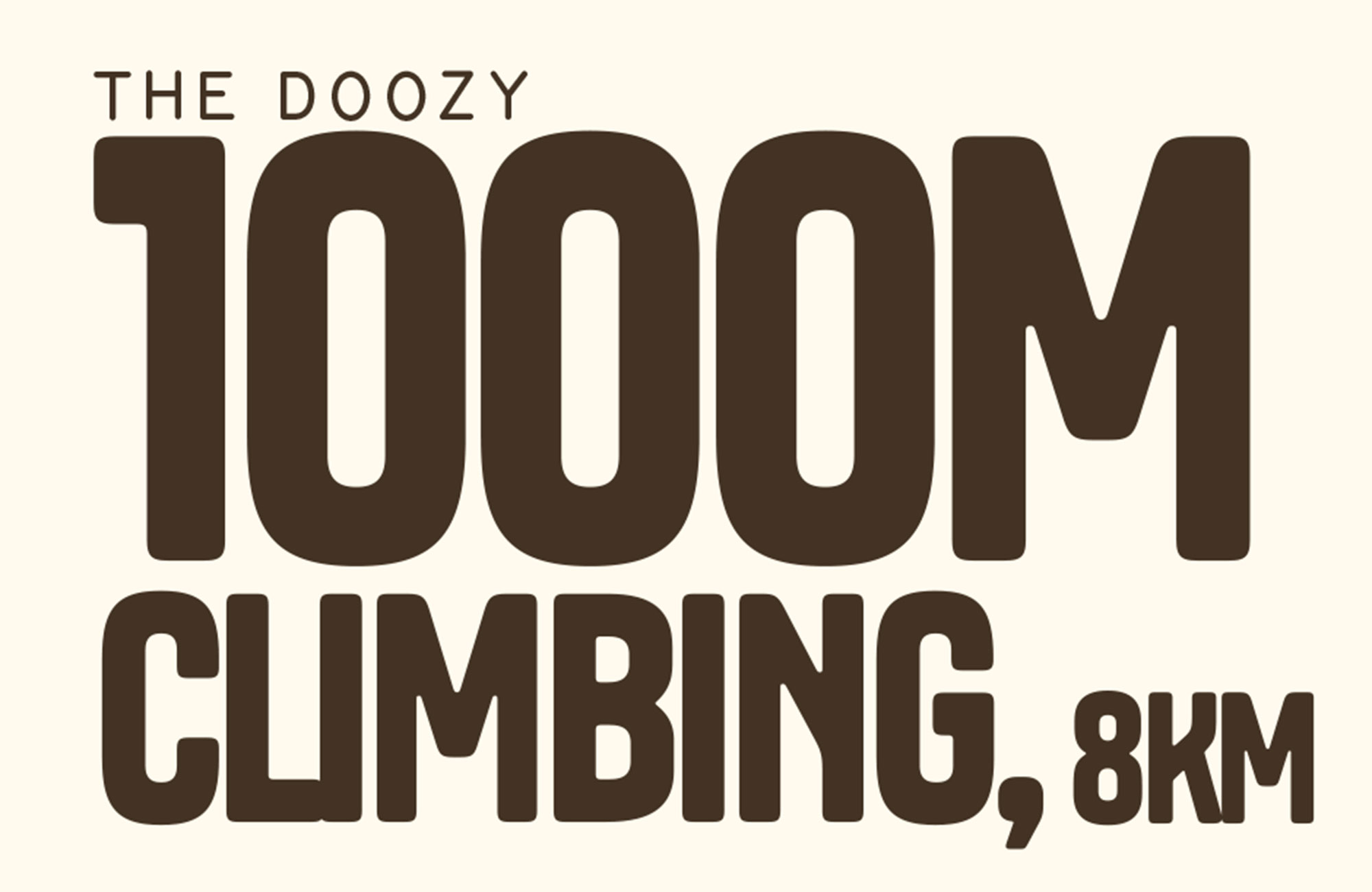
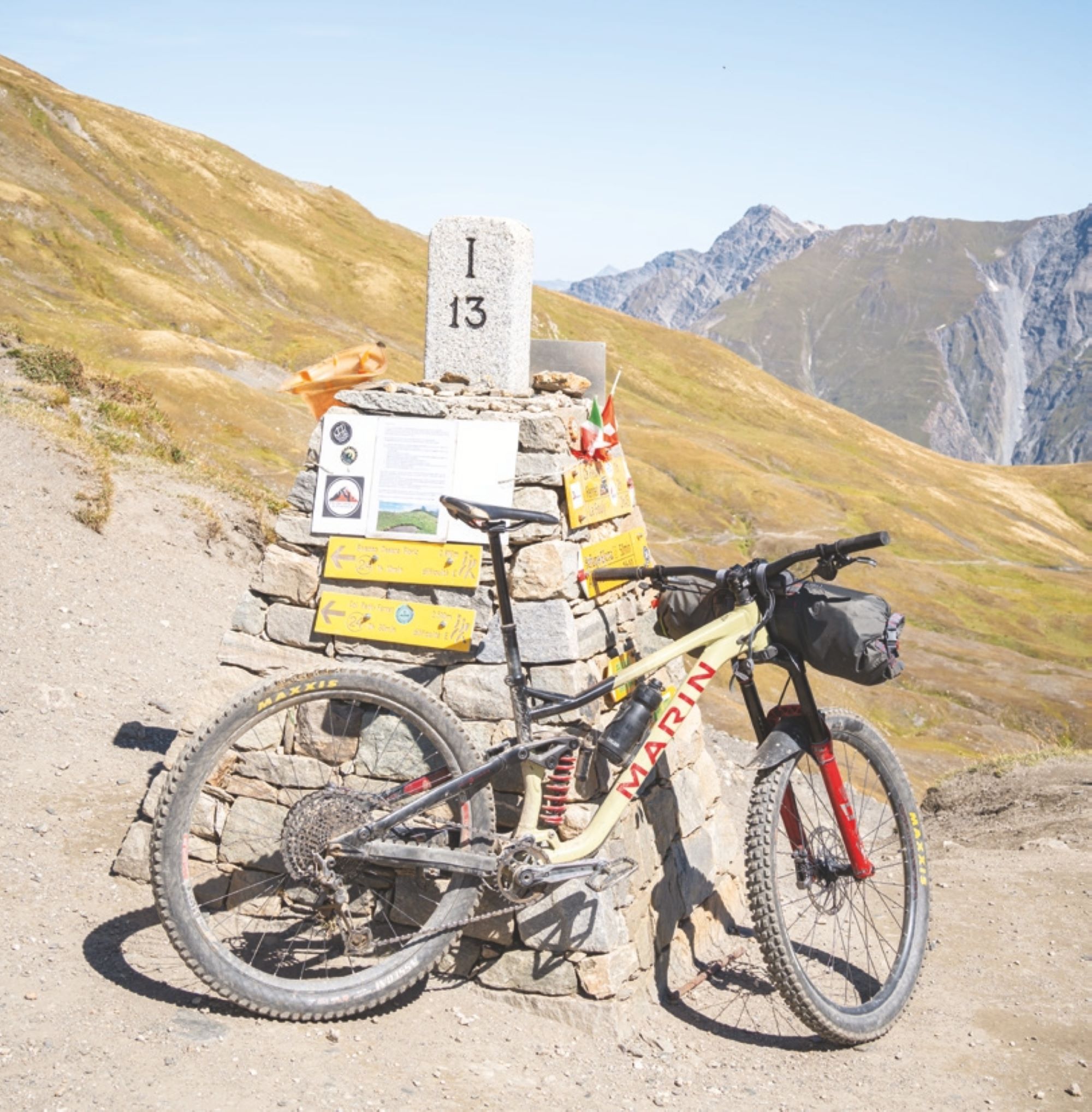
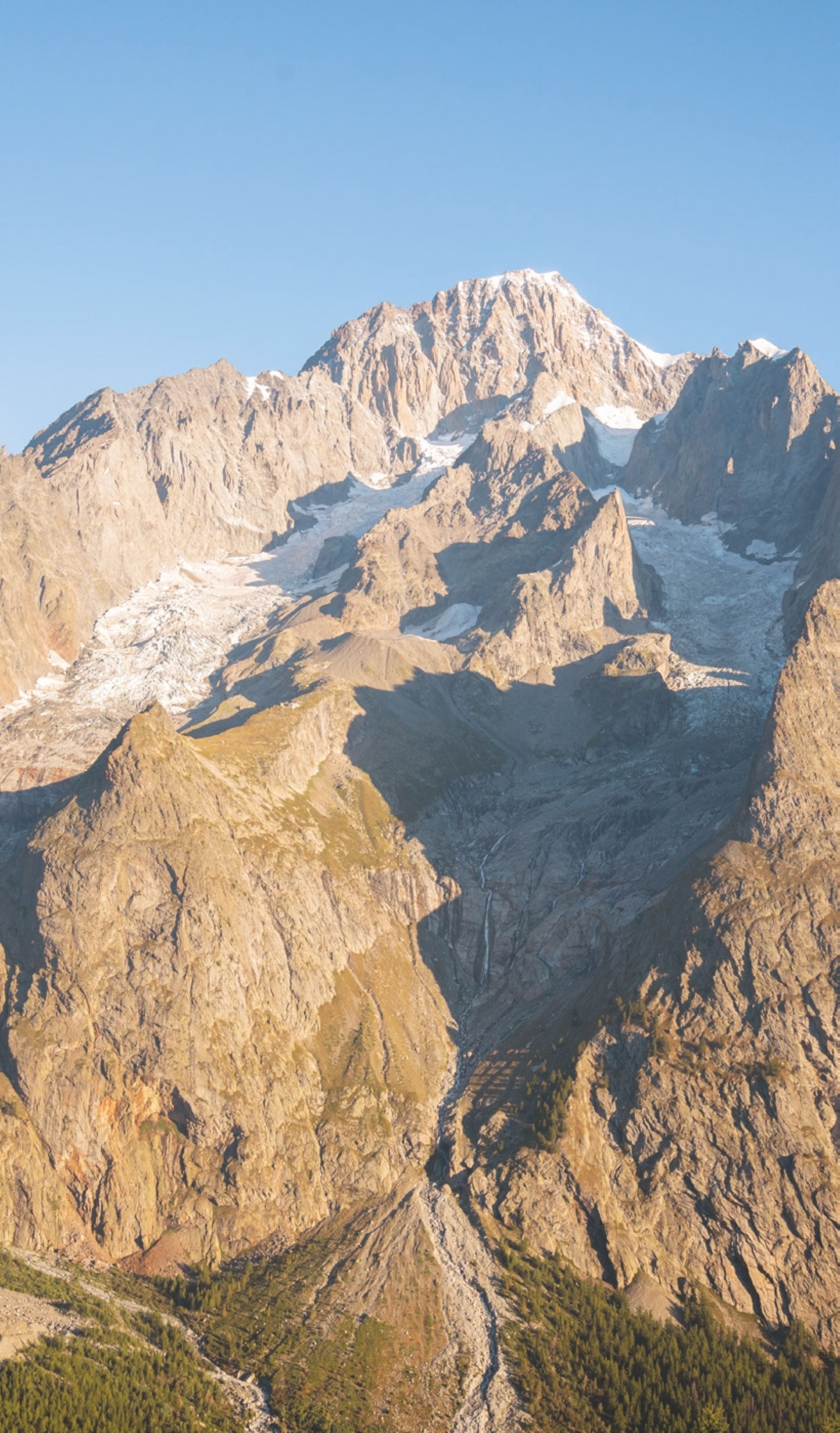
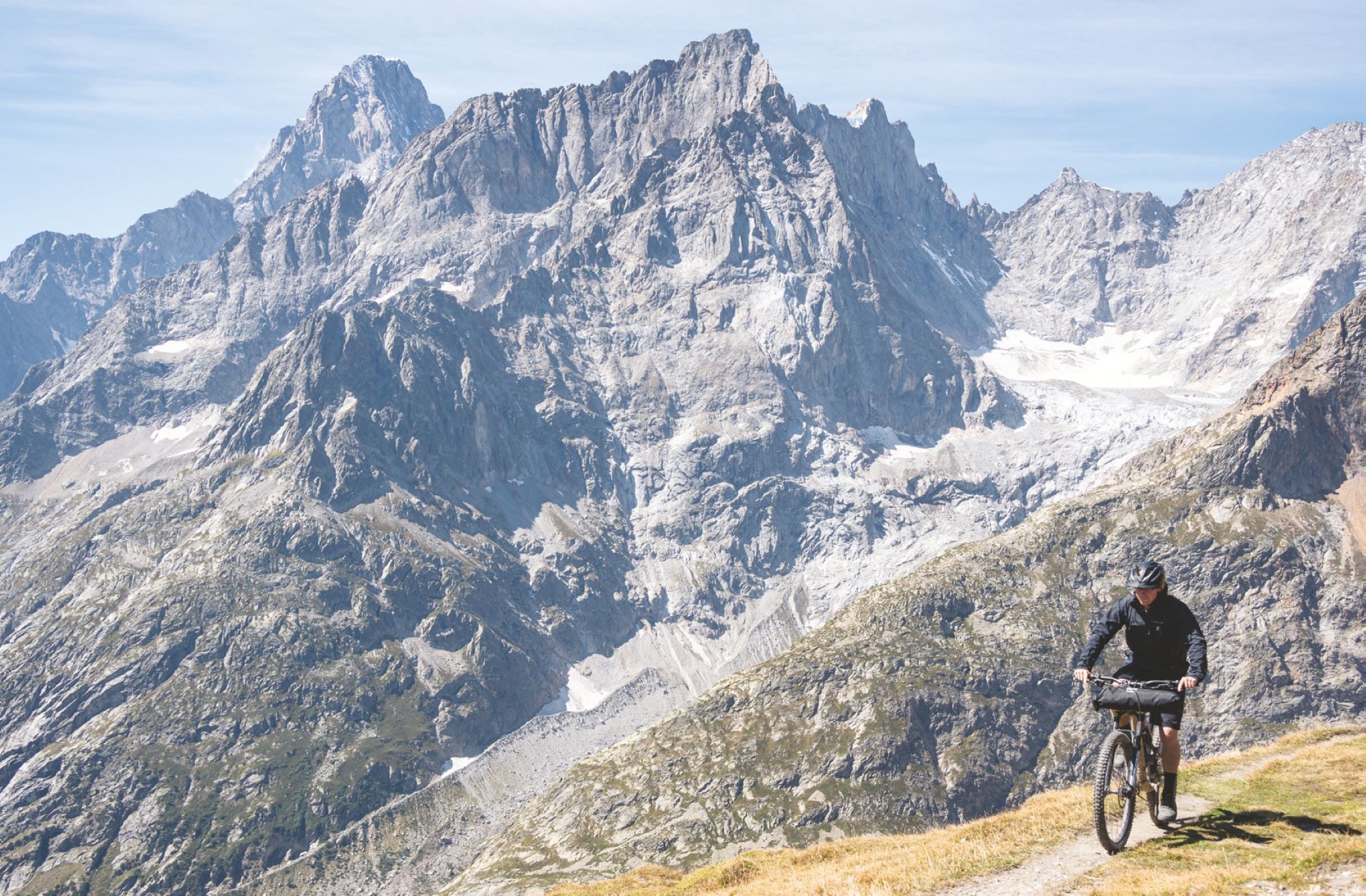
Day Three
At first light, I boosted down the trail to meet up with Fynn for a coffee and debrief on the previous day's debacle. We had now been put back slightly in our timeframe and had to put in a big shift to finish today. We were met by another beautiful morning with a more relaxed gradient that tracked past a series of Alpine refuges and what felt like hundreds of people enjoying the outdoors.
The climb then reached its peak, and we headed over our final border crossing back into France. Standing on the ridgeline gave us the best views of the entire ride; a full 360 degree of European alpine excellence.
Also a treat was the following descent, which was definitely the most flowy and playful downhill of the trip. We approached the township of Les Chapieux where we made a quick stop for lunch. Although a traditional French quiche and salad was not exactly the most ideal endurance fuel, we made do and pressed on to the most gruelling climb on the loop. We nicknamed it “Le Doozy” – 1000 metres of climbing over 8kms of distance. The grade of the trail began too steep to ride, so pushing or carrying your bike was the only option. In the heat of the sun it was pure punishment but reaching the top gave us an overwhelming sense of accomplishment.
Following a couple of rock garden scrambles, we were treated to a 20km descent through varying terrain. The drop in altitude felt never-ending until we finally hit the town of Les Contamines- Montjoie. By this point, I was personally flogged and could feel the dreaded bonk beginning to set in. In a speedy trip to the supermarket for some kai, a couple cans of Coke and a bag of lollies combined to keep the bonk at bay … for now.
At this point, we only had one more climb and descent to go to complete the loop. In my fatigued state, I chose to take a route that followed a more paved road, whereas Fynn followed the marked TMB trail. This was a timesaving strategy, as again we were trying to work with the remaining daylight we had left. We managed to make it to the top of the last set of hills just as the sun had set. With one head torch and two phone lights we managed to navigate a series of overgrown walking trails that lead into the Les Houches bike park. I was in no mood to try and enjoy any of the bike park trails in the pitch black. Feeling close to exhaustion, we started to pass through the glow of street lights and all of a sudden we had returned back to the van, where we had set off two days earlier. Celebratory high fives were followed by a mandatory McDonald’s trip for a recovery feed and some reflection.
The Tour du Mont Blanc was a master class in character building mixed with some of the most beautiful scenery I have ever experienced on two wheels. Did Matt and the Specialized crew make it look easy? YES. But any type of adventure condensed into a seven minute edit is going to have its fair share of sugar coating. I can personally say the pain was worth it and I am stoked to have it ticked off my bucket list.
The Tour du Mont Blanc was a masterclass in character building, mixed with some of the most beautiful scenery I've ever seen on two wheels.
